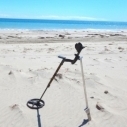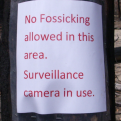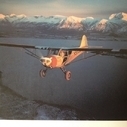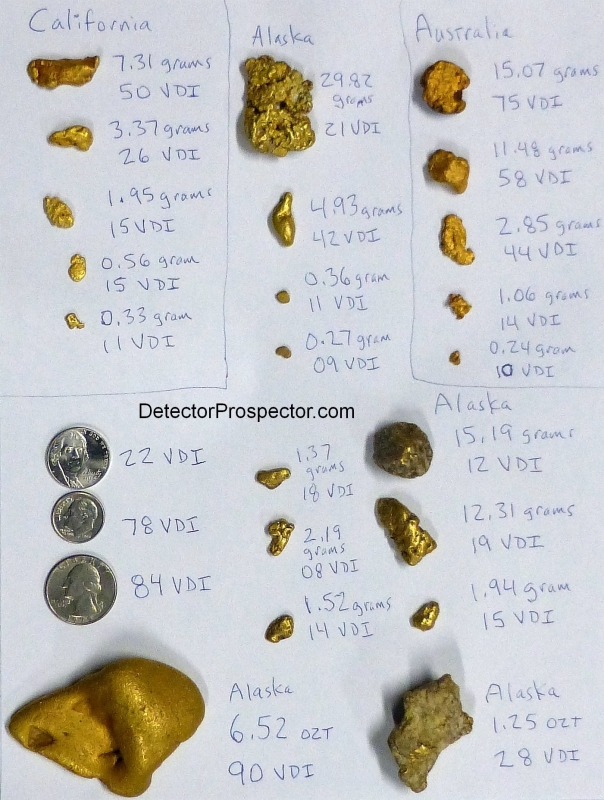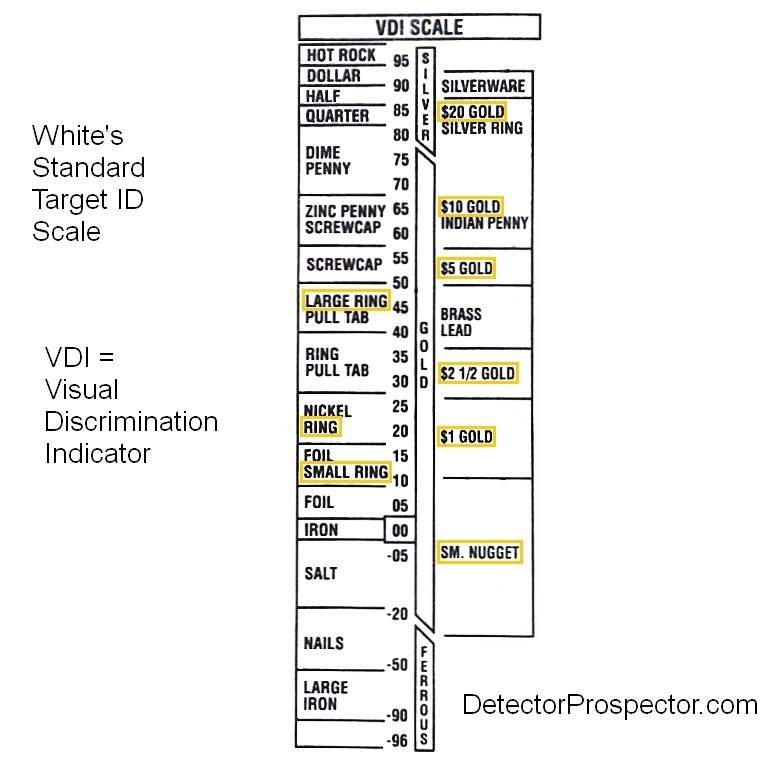Leaderboard
Popular Content
Showing content with the highest reputation on 01/03/2021 in all areas
-
My wife really wanted to go to snorkeling at the beach today, but I have a landscape project to get started so I didn't want to go. She convinced the kids and I to go so off we went to a very popular spot in Maui. We went a little later in the morning so there were quite a lot of people already out there. I'm not one to care what other people think so I started detecting. There was a spot where the tide had washed out the sand a foot or so and that's where I focused on. Several curious people asked me if I found anything and only 30 minutes into the hunt I had a few coins. A father and son were very interested as I dug up a cent coin and I said I knew it probably was because it was a 20 on the target ID on the Nox 600. Sure enough it was. Now I am just learning to beach detect after being an avid nugget hunter for over 20 years. The father and son watched for a few minutes and I had another target. It was an 8 and I said probably not a coin, but a hair pin because I had dug one up a few minutes prior to them watching me and it was an 8. To my surprise hanging half out of my scoop was a balled up necklace! It was silver in color and turned out to be 925 Italy! It measure 26 inches long! A few targets later I got a tiny little silver ring, also 925 and has a couple tiny stones. Turned out the ring has cz also stamped in it so probably cubic zarconia. For an hour and a half hunt I ended up with the necklace, ring, fake gold ear ring, 7 cents, 3 nickels, 1 dime, and 1 quarter, 2 hair pins and 1 pull tab. I found another quarter but must have dropped it. I would have hunted a little longer but there were just too many people by 11:00 and I was almost getting hit by people on boogie boards since the tide was coming in. Going to try and get back out at sun up to another popular beach tomorrow! The beach next to my house doesn't get waves and surf so I probably won't go there. I hunted it at Thanksgiving and only got a few dollars in change from the dry sand area where people put there towels out.12 points
-
Watching for several days of strong wind, this time out of the south, not as good as NNE but still stirs the sand and removes some, it just opens and closes quicker. Found two documents one by J. Clausen, archie that worked with state and on several sites including the Winter Beach Survivors camp and a “1715 Treasure Ship”; the other by a private collector, Lou Ullian. https://1715fleetsociety.com/lou-ullian-personal-collection-treasure-photographs/ and finally picture of a restored set. Happy New Year everyone!11 points
-
Week after doing so research with historical maps and pictures of old buckeye az buildings I had 3 sites to check. One was an old house from the 30's now it's an empty field, one a 1890's school house also an empty lot, and the last was an old house from the 40's that burned down in the 90's and is still there. My finds included a 1958 franklin half, 3 wheat pennies, and a 1940s boy scout handkerchief clip. Oh and 2 really old marbles.9 points
-
I got out for a night water hunter yesterday. I had hit a bunch of lead targets and the usual garbage. I did score a nice 10k ring at about 8 inches. It was easily heard with a short signature. I also hit a 14k gold chain and charm. My guess it was around 5 to 6 inches. It came up with the first scoop and the chain was exposed. It sounded like another lead fishing weight. Some of the fishing weights were over 12" and clearly can be heard. I just love this machine.7 points
-
7 points
-
Every year I find myself buzzing around trying to finish off the year on a high, to lift the gold tally as high as possible before it it gets counted off for the year. This year I came in really strong and had some good finds throughout December. But now its a new year so the tally is at zero again and I need to start anew. Coincidentally the rain started Christmas Day and has continued right on into the new year, so now even the way I detect has changed. Everything is greening up so visually things are looking completely different compared to the drought and of course the ground now sounds completely different due to the moisture. What better way to get the year rolling and the gold tally started again than to grab the little Nugget Finder Zsearch R12 and go target some guaranteed gold on old patches. I was in a lazy mood and only wanted to wander about for a few hours so I went to an old favourite not far from home. The ground I work in Clermont is High X and conductive, conductive ground is a little different to salt signal, it is a salt like signal that is affected by moisture but is heralded like a blended extremely variable ground signal. Generally bad Salt signal is a waa waa like sound that is very broad and speed effected whereas conductive ground is over tighter sections with variable elevated ground noise like responses liberally scattered about. This is why our gold fields become noisy after rain and you find yourself investigating a lot of broad ground noises that were not evident during the dry periods. Conductive signal really messes with the Auto-G of Semi-Auto and can become a handful at times with the constant need to pump the coil to bring the GB back to accuracy. So the little NF Zsearch makes sense, the smaller the coil the less conductive/salt gets into the signal train. Smaller coils ignore salt signal way better and is one of the reasons why the SDC 2300 is so good in salty ground. Generally smaller coils tend to Saturate more readily but the Zsearch is extremely good in this regard (even better than the GPZ14) so thats an advantage, lastly this time of year EMI is a major issue as our Monsoon is in full swing in the north so Atmospherics are extremely problematic, the new Zsearch is amazingly quiet EMI wise. In the 2 hours I detected I ignored the bulk of surface sounding signals (even the nice rounded sounding ones as they are more likely to be shotgun pellets), like I said I was in a lazy mood so only wanted to investigate the ‘higher likelihood of being gold’ targets. With the little Zsearch I listen for the broad subtle channel flippers, these are the little buried nuggets that blend High/Low with Low/High, they are just about guaranteed to be a nugget when using Difficult. A fun session but not a lot of weight, however I got the tally for 2021 started and my puppy got a lovely walkies for New Years day.... till next time JP. PS I’ve put this in the NF Zsearch thread as it’s relevant for those seeking information on the subject Settings used: Coil used: NF Zsearch Proto in 13” housing no stickers Gold mode: HY Ground Type: Diff Thresh: 26 Thres Pitch: 40 Audio Smth: OFF Sens: 15 Grnd Bal: Semi-Auto6 points
-
In the last week I have found 12 silver coins at some incredible depths with the Equinox 800. Dimes, quarters, and wheat cents at up to 12". Both Park1 and Park2 have been used depending on the soil. I think Park1 may be a little deeper than Park2. Regardless of which Park program I use I run Iron Bias in F2-0-1, Multi 5 tones, Recovery 4, Sensitivity 22-24 if EMI is low, but even at 20 I have achieved some incredible depths. I've had buddies swing over these with Etrac's and CTX's with large coils and they can't touch some of these deep coins. One buddy used his Etrac, Deus, and Anfibio and was skunked on the deep silver at this place.5 points
-
One site was new. It has very sandy soil and most all silver found was probably lost in the early 1940's-50's. These coins have sank super deep. The first time I hunted it I was in Park2 until the very end of the hunt. I was finding deep coins, but I switched to Park1 and it lit up big time. The other site is a hammered park I have been finding deep Mercs for awhile, but since I lowered Recovery to 4 I have gotten 3 of the deepest Mercury dimes I have ever dug out of heavy clay soil. I run Park2 there because I get a lot of iron falsing in Park1. Park2 does not false on iron nearly as bad. Pics are from today the last Merc I dug. Heavy fairly mineralized clay.5 points
-
That’s awesome! Congrats! Have you been finding real deep coins since you’ve been swinging your Nox? Was this a new site (or sites) you’ve never hunted before? I found 13 silver this past week with my Nox, and all of my finds were from heavily hunted sites I’ve been detecting since 2010, but just recently have hunted with my Nox. None were deeper than 9”. 2 Rosies I found yesterday are not in my pic below.5 points
-
I have got up on my soapbox every year about this time to prognosticate about the coming year in metal detector technology. 2020 was an especially significant year as we lost another major player in the industry. A few years ago it was Tesoro going out of business. In 2020 we learned that White's is closing shop and being acquired by Garrett. It is unknown if Garrett will attempt to keep White's alive as a separate product line, or simply acquired the rights and technology to keep somebody else from doing so. At the moment it seems White's has gone away for good, but it is not impossible Garrett will revive the name in 2021. Whatever they decide will have a major influence on metal detecting in the future. But in the meantime we have fewer players now to speculate about. Garrett/White's - we just saw the release of the Ace Apex, a first foray into multifrequency by Garrett. The company already has a very well implemented wireless audio system, and the Apex is fully rechargeable. The White's acquisition means Garrett adds the V3i multi tech and TDI PI tech to their IP base, and this along with the half-sine patent means Garrett has a fresh shot of technology options to choose from. The White’s 24K is a superb product, now unavailable new. However, I expect an acquisition of this magnitude to take time and I'm not holding my breath on any really new product in 2021 from Garrett. At most perhaps a revival of some White's models, or releasing clones under the Garrett name. At the moment however I see Garrett as the U.S. company with the most potential for the longer term future, regardless of what happens in the near term. First Texas (Bounty Hunter, Fisher, Teknetics) - whereas Garrett seems to have a purpose, First Texas seems adrift these days. Most of the Fisher models on the website have been discontinued, or are decades old. Teknetics as a brand seems nearly dead, focused on factory direct sales. Basic advances like in-built rechargeable battery systems, wireless headphones, and over the internet updates - all go ignored at the company. The only news is a new line of pulse induction detectors, but as the lack of interest from users on the internet shows, most people are not screaming for First Texas to bring a PI to market. Everyone wants to hear about a major response to new machines like the Equinox, but so far it's crickets from First Texas. The final production Impulse AQ will hit the market in the first half of the year, but I expect it to have almost no impact on the overall detecting world, or even the beach detecting world for that matter. People will still choose VLF over PI for beach detecting by huge margins, so the Impulse AQ has a shot at being nothing more than a niche detector in a niche detecting market. The Gold version has potential to crack open the gold prospecting market that Minelab currently dominates, but it is going to have to have a very attractive price/performance ratio if it hopes to make Minelab users consider a new brand. For many gold prospectors Minelab currently is the only choice in detectors. Hopefully there is more going on at First Texas than PI, because they are sliding into irrelevance in high end VLF. It seems more models keep slipping into the Bounty Hunter lineup, and if nothing changes someday the Teknetics and even Fisher lines may be retired. Or the Fisher line could be boosted with new high end machines to become the high tech alternative to Bounty Hunter. That was the original plan buying this old name in detecting, and 2021 will probably determine what happens for the Fisher brand in the future. Revival... or the next slow death? Minelab - on a roll still, with the new GPX 6000 due out this spring. When it comes to cutting edge technology, Minelab remains the company to watch. There is no doubt a replacement for the CTX 3030 in the works, but there are no solid hints at when it may arrive. I am guessing 2022 since the last two rollouts were for coin detectors (Equinox and Vanquish). Minelab tends to address areas in a round robin fashion, and I believe 2021 will preferentially freshen the gold prospecting lineup. Nokta/Makro - the easy picking low hanging fruit of single frequency VLF has been fully exploited at Nokta/Makro, and it remains now to see if they can make the move up to higher tech product like simultaneous multifrequency and ground balancing pulse induction. The rapid pace of new product releases has stalled out as further advances will be more difficult. Historically NM has used their Christmas card to hint at new releases, and this year they took a pass on that. I'm hopeful for 2021 but certainly not holding my breath, as it may be fall at earliest before we hear more. Tarsacci - a new 12" coil for the MDT is in the works, and a possible change to the battery door design in future versions. XP - still largely a one-trick pony with the DEUS, and the ORX, which is really just a subset of the DEUS. Will we ever see multifrequency or PI from XP? All is quiet now with the news over ORX run it's course, and right now there are no hints of anything new from XP for 2021. Just random blatherings from an industry old-timer, worth every penny paid. I'm pretty well set for detectors these days, with only the grudge match between the Minelab GPX 6000 and Fisher Impulse Gold having any interest for me personally. I have to put my money on Minelab when it comes to cutting edge tech, but I do hope the Impulse Gold is good enough and low priced enough to shake things up.4 points
-
What better way to ring in the new year than going nugget shooting in the sunny desert southwest. 😎 In my wanderings through an area heavily worked by the old-time placer miners, I spied an old raked and drywashed nugget patch on a hillside that sloped down to a gravel bench deposit high above the dry creek bed. Back in the VLF gold detector era, the surface rocks were raked away in order to get the detector coil right on the ground, to make up for their limited depth capabilities. Detecting these types of environments with the newer PI and ZVT tech can reveal deeper nuggets that were beyond the reach of VLF detector operators. Slow and methodical coverage of the old patch with the GPZ 7000 yielded two small nuggets for the poke today.4 points
-
One word of additional caution regarding videos - editing makes any hunt look like the targets are just repeatedly popping out of the ground. None of these you tubers are going to keep the clips of digging junk and pull tabs. Videos seldom reflect the reality of typical detecting session - hours of nothing but dug junk, punctuated by a few seconds of pure elation. However, just digging the finds is not the end all and be all of detecting IMO. Meeting new people with a common interest in history and the stories behind the strange things we do pull out of the ground (trash and treasure) and enjoying the sights and fresh air or simply the feeling the history of the place you are detecting are all part of the adventure. Regarding test and comparison videos - always be skeptical of the motives of those posting the videos (lack of knowledge of the settings/nuances for the detectors being tested, personal bias, or having a vested financial interest in the detector(s) being tested). You tube is great place to learn techniques and to learn about equipment but I would not look to it as a realistic depiction of detecting in general or if you are really seeking the truth about any particular detector. That takes first hand experience and testing.4 points
-
Its been a while since I’ve posted anything as I’ve been away up north and when I got back to the island I was evicted from my house (rental).. The sewage tank had collapsed and my house been declared uninhabitable as a health hazard.. Crap way to start the year (pun intended).. Nonetheless, this morning’s coin-shooting expedition at Radical Bay made up for it, at least it’s put me in a much better mood.. I found $65 and 4 cents (‘old’ Australian coins 1 and 2 cent pieces).. Plus a $25 casino chip (it’s got a metal centre), a tungsten carbine wedding ring (worth between $250 - $300 online), some other pieces of jewellery and a hash pipe.. Whilst this bay was once a popular camping spot it has become isolated since January when we had over 260mm of rain in 5 hours which has washed away the access road.. I don’t think anyone has ever been there with a metal detector.. The first thing I noticed was the huge amount of rubbish metal in the ground with no end of bottle tops, ring pulls and old cans.. So much so that I decided only to dig for gold coins ($1 and $2) and 50 cent pieces, leaving all the other silver coins behind for my next trip.. I concentrated on the camping areas along the bay set amongst the vine and palm trees as the beach itself was yielding very little.. As I said this little haul has restored my faith in this wonderful world, all it needed was to let lose my Foxy Noxy..3 points
-
I've been limited to 2 hours and 45 minutes. I do have a second battery coming in and OBN said maybe around the middle of the month he'll have my battery built. I can't wait to get a 4 hour hunt in.3 points
-
Tony - welcome to the hobby and to the forum. I wouldn't say your lack of silver finds is coincidental - more like expected. You did manage a merc and copper and all the other targets (which are much harder to detect) suggest your machine is working fine. Silver does not just pop out of the ground at old home sites, especially nowadays. You see posters here with their 100+ silvers for the year etc. Usually, they are prolific hunters with probably 25 to 50 sites (schools, house sites, old ball fields, parks, etc.) and a lot of swing hours and they are the exception rather than the rule. So do not use that as a benchmark for whether your one site is productive or your detecting methods are sound. The thing is, most new detectorists do not stumble upon a site like your 1890's boarding house as a first-time visitor. That site has more than likely been hit by multiple detectorists over the years and silver, copper, and clad is the first thing that comes out of the ground as it is typically the easiest thing to hit with any vlf induction balance detector because it 1) has high conductivity and can be easily detected at depth and 2) it has relatively few junk targets that have ID's that fall in that range to compete with (even falsing iron). The fact that you dug a lot of older copper is promising - but it may be just a matter of those that got there before you cherry picked the certain silver signals. Gold and nickels on the other hand, compete with aluminum junk. Many folks give up on those targets after they have dug a couple pouchfuls of pull tabs and aluminum can slaw. You did really well to recover all those nickels. Coil coverage is also key. You need to be disciplined about covering every inch of ground you can with the center line of that coil. Just as in golf, a put will never make it into the hole if you don't give it enough momentum to move past the hole ("never up, never in"), you will never detect a buried target that you don't get the coil over. You are also still learning your machine, you will start to understand the nuances of iffy signals and how to coax a more definitive signal through coil control, interpretation of the audio as well as visual ID, use of different modes to interrogate the target etc. That will increase you keeper to trash ratio. If you are digging selectively right now, then you are doing a pretty good job especially with those nickels and the ring. Even if you are digging every repeatable signal, I would say you are doing great. At extreme depths, the Equinox will still hit on targets but soil mineralization and other effects may result in a ferrous ID. The only way you can see those targets is to hunt with no disc and dig all ferrous signals. You will also eventually learn how to exploit junky areas with the superior separation of the Equinox. That is where many keepers lie masked for years because detectorists did not have the detectors that could separate the keepers nor the patience or ability to clear out the junk. Regarding your detector setup - I would avoid straying too far from the defaults. The trade off on lowering recovery speed is more ground noise, but that is not noticeable when using normal discrimination settings. You really are not gaining so much in depth as being able to hear perhaps those edge on targets better that might otherwise give short clipped tones at higher recovery speeds. I prefer using F2 - it is very effective at the default of 6 keeping ferrous falsing in check and seems to have minimal adverse impact on separation and masking compared to FE based on testing Steve H. and others have done comparing F2 to FE. One trick up your sleeve if you want to go for sheer raw depth, is to try single frequency at 4 khz or 5 khz, especially if you encounter an iffy target. With the 800 you have the ability to store a "custom profile" that can be accessed with a single push of the user profile button. I like to store my target interrogation mode of choice in that slot. For example, you could store a single frequency (4 or 5 khz) Park 1 setup in the user profile slot while searching in Park 1 default multi. When you encounter an iffy signal, hit it with the custom single frequency program to see how the target responds. Single frequency can pull deep silver, especially on-edge silver, out of the muck. The drawback to single frequency is it tends to be subject to EMI (so be sure to do a noise cancel and ground balance on whatever custom mode profile you store in the user profile slot before you first use it at a new site) and is less forgiving of a non-optimized ground balance. Also, in single frequency, you lose the iron bias feature. It is for all these reasons that I tend to shy away from using single frequency as a primary search mode unless absolutely forced to do so. The key to more silver is really simply getting access to as many potential silver bearing sites as possible and spending a lot of time carefully gridding the site to ensure you covered every inch of ground or hit junky ground (iron infested sites and aluminum infested sites) that may be hiding shallow non-ferrous keepers. You have the tool in your hands to do it because their are few other detectors that can separate as well as Equinox. So - get more sites (location, location, location), continue to learn the language of your detector and what the settings do (but avoid the tendency to over tweak the settings - in other words you should have a good reason to stray from the defaults not tweaking for the sake of getting a different result), get as many swing hours as you can, be persistent, dig as many target hits as you can, and most of all, be patient. HTH3 points
-
Hi! I'm metal detecting for around 6 years now, started witch an ACE150 the got a Gold Bug Pro Clone. I'm from the south of Germany near lake constanze. Because metal detecting in germany is only fully legal in the state of bavaria (30km from me) i'm only metal detecting 4 or 5 times a year (and when i'm on holyday at the beach).2 points
-
2 points
-
Congrats on the gold! I love my AQ too, with OBN's big battery, it is a power house on the beach. It Screams over gold & nickels! The other day I was hunting behind another detectorist using a PI, 10 inches to the side of a hole he left and three scoops down I dug a 7 gram 14k bracelet. I was fricken stoked considering the knucklehead left all his trash behind for me to go over.2 points
-
Compared some nuggets and lead shot from shotgun shells. Used a PI circuit, 3.5us delay with a Rx coil about 5 1/2 inch diameter. Appears 4, 6 and 8 shot are similar to the 8mesh nuggets. If I were to try to find small gold nuggets what detection distance for the lead shot should I want? Larger coil would improve detection distance for the larger nuggets.2 points
-
Two ripping answers from Chase that are worth reading again . If you are missing silvers with the Nox then you are doing something wrong . Many here in Aust. consider the Nox to be a silver slayer , in particular of small silvers like our 3 and 6 pence coins . My personal experience has been that anywhere that i have covered with other machines in the past , the Nox can find a little more . Have faith in your Nox , learn it's ways and you will do well .2 points
-
In my limited experience, houses/homes can be all over the map. 1) Did people spend time outside? Were there shade trees -- see if you can find where they were? Was there a garden? 2) Did children play with coins (if so, likely pennies). 3) How soon did they get indoor plumbing? 4) Did they hang clothes on a clothesline (if so, fantastic place to search for coins -- pennies and dimes in particular)? 5) Did they park the car in the driveway or in a garage? Driveways can be quite good but be careful recovering if they are crushed stone or gravel as digging that can cause your tool to slide into and mar a coin. I had a 19th Century home that produced hardly any old coins. I had an early 20th Century house that produced a lot, including several dimes. I had a late 1950's / early 60's home that got me my still best penny (1924-D) -- pretty sure that was dropped by kids playing adults (i.e. exchanging money = pennies) as I only got Wheat pennies (no silver) and Memorial pennies & clad from that site. My four year data say I get about 1 silver dime for every 10 Wheat pennies. Since copper pennies and dimes (both silver and clad) give similar VDI's it's not very likely that someone has cherry picked the dimes and left the pennies.2 points
-
Getting some parts in: Display housing, main pcb and other miscellaneous parts. Display housing parts and display pcb Display board in housing Internal frame to hold pcb, batteries, and other connectors Inserted into the carbon fiber housing, with front feet attached Display frame laying on top of the main tube housing Coil form Wire attachment area and cover Spent some time today cutting carbon fiber tube, doing a little spray painting, nothing major. I'm not looking forward to cutting out the openings on the tubing without a decent mill or cutting tool, only two of the drilled holes will be showing, everything else will be covered by frames, so no jagged holes will be showing - but this stuff isn't the easiest material to work with. About Carl and George's Geotech1 Forum, is it on this forum somewhere? I would like to check it out. ...we'll see if I'm able to get anything done tomorrow...2 points
-
Alaskan_EOD, Sitting here on a cold winters' night, I enjoyed following along on your trek to the creek and breaking in the new high banker. With the first trip to "the bend" under your belt, I will be pulling for wild success on trip #2. Thanks for the post and pics. Rich -2 points
-
Got out today for a few hours at an old homestead in downtown buckeye arizona. In the past I have found a silver dime, old pesos, some old buttons and lots of wheat. Well today was the best day yet. As soon as I got it off the truck I got a 29, 30 on the nox 800. I expected trash or a clad but I got a good, old surprise. A 1894 barber half! It's in poor condition and isn't worth much but it's my best silver find yet.2 points
-
Some info here: https://www.prospectingaustralia.com.au/forum/viewtopic.php?id=310742 points
-
That's a stellar find FS! Congratulations! I'm so jealous!! I've been up there several times this year and last! But no major finds yet! Only small hints and teasers of the fleet items! But I'll still get up there whenever i can get away!👍👍2 points
-
Hello Tony! Welcome to the forum. I’m new to this forum too, but I’ve been detecting for decades, and have made hundreds of finds/instructional posts across several other popular online detecting forums for 13 years now. I’ve been using Minelab detectors since 2007, and just last year, I bought an Equinox 800. You’ve already received great advise from very knowledgeable hunters here. I’d like to give you a different perspective of someone else’s finds (my own) from a different area of the US (So California). I’d consider myself a hardcore hunter...well, I used to hunt 4-5 times a week for the past 10+ years, but last year, I managed 2-3 hunts a week. I detect mostly parks, old schoolyards (if I can get in), and beaches. I have hundreds of parks/schools where I’ve dug silver coins, wheat pennies, older sterling jewelry, and a small sprinkling of gold. My parks where I hunt are so littered with aluminum trash that I tend not to dig a high number of lower conductors, such as nickels. For instance, last year I dug over 300 silver coins, 1700 wheat pennies, and 40 or so pieces of sterling jewelry. I have a 13 year avg of 4-6 wheat pennies for every 1 silver coin I find. These wheat/silver ratios have been the norm here for me for years, yet in other areas of the country, those ratios are far from realistic. I surmise your ratios will not be the same as mine, but you need to hunt at least a year at various sites around you to compute a more accurate silver/wheat dig ratio. Now, here’s something of interest: Out of all those old coins I found this year, I have maybe 10 Buffalo nickels and a few V nickels. So, in one month’s time, you nearly dug more old nickels than I did all year. You would go batty digging nickel signals in my area. 🤢 You certainly picked the right machine for what you’re interested in finding. As I stated above, I chose the Nox 800 last year after swinging a ML Explorer SE for the past 13 years. I was averaging 500+ silver and 3000 wheats a year with my SE for over a decade. The Equinox has been a joy to use so far, and has performed beyond my expectations. Best of Luck, 👍🏼 Dan2 points
-
Hi Tony and welcome to this forum. I believe I already gave you a long reply on another forum. I see you are asking the same question here. You will get similar answers. Your Nox is fine. Since you are finding some wheat pennies, the older silver will eventually happen. For me, where I detect, finding a mercury dime is a big deal since this area has not been inhabited by people with coins for very long. So, my wheat penny to mid 1900s silver nickel, dime, quarter ratio is at least 10 to 1. Make that 50 to 1 for wheats to early 1900s/late 1800s silver coins, indian heads and V nickels for last year. Chase is a field trainer for the Equinox and he hunts near your area. Read what he says very carefully and try to follow his suggestions.2 points
-
Yup, if I had to guess who would tease the first nugget of '21 it would be you Lunk. Happy New Year.2 points
-
I tried finding my previous (2019) summary report and New Year's resolutions but failed. Well, I have the data (from my logs) and I roughly remember my goals -- find some new detecting spots. I left my old heavily searched (by me) schools and parks alone this year and returned to a couple I had barely detected plus one I had never detected. 90% of my year's detecting was spent on this last (previously undetected by me) site. All three yielded silver coins. Not surprisingly I spent most of my year in the one that seemed to be the best producer. I finally retired for good in February (I'd been 50% for the previous 1 1/2 years) and it did lead to more hours in the field, but not large multiples (311 hrs vs. my previous best of 263 hrs). My most noticeable increase in raw numbers was almost doubling my "other old coins" finds, those being pennies before Lincolns, denominations no longer minted (e.g. 2 cent), 5 cent pieces before Jeffersons plus the silver Warnicks, and all higher denominations prior to 1965 -- i.e. the silver years. I keep a separate category for Wheat pennies. My other old coin count (still modest compared to many here, some of you reporting 100 or more for the year) was 43 (previous record 22). I found 103 Wheaties along the way (previous record 90). Most of the increase in the 'others' was from nickels across the board (especially Buffies and Warnicks). Here's a photo of my last 6 month's 'other old coins': No rare or even semi-key date+mintmarks there. Both Indian Head Pennies are from the early 20th century (very common). I can't read the dates on the very badly worn V-nickel and two of the three Buffies (other is 1920 plain). The Jeffie (lower right) doesn't count as "other old coins" but is included because it's a fairly low mintage 1950 plain (not to be confused with the lowest mintage of the series which also came out that year, with Denver mintmark). The silver charm(?), at least I think it's silver, is not marked but I think it's some kind of artisan silver piece -- rather crudely made as you can see. Surprisingly I got very little silver jewelry this year since I dig everything about 20 on the Equinox (i.e. above Zinc pennies). I didn't buy a single detector this during 2020, only a couple coils (both for the Fisher F75). I feel like I learned a lot about using the Equinox but nowhere near everything I'd like to know and apply. Oh, one of the IHP's was found with the Tesoro Vaquero. (Only 9 hrs or about 3% of the year was spent hunting with anything except the Eqx and almost all of it with the 11" coil.) I used to buy a new (or used) detector every 8 or 9 months. The risk (and I paid for it) is not ever really learning one properly before I shelved it for the greener grass on the other side of the hill. I'm not making that mistake with the Equinox. For 2021, my goals/resolutions are the same, but to a higher magnitude. I'm going to find some local old, forgotten sites thru research and at least make an attempt to get permissions (if they are private, which is likely). The pandemic did hinder me a bit in 2020 with no detecting trips out of my local area. I have three promising permissions on hold (a 19th Century picnic/swimming hole, a 19th Century church site, and an 18th Century New England homestead -- none of these has ever been detected according to their owners). I missed getting out west for natural gold searching and ghosttowning. I should at least get to Colorado late spring or early summer for both and maybe Nevada (fingers crossed) again this year. While the weather is uncooperative for detecting I'll do more backyard testing and (finally) learn how to clean my now 294 Wheaties, many with dates currently hiding under the infamous green scale. (Maybe some semi-keys among them -- I hope, I hope.) If I can figure out how to pan in my (heated) workshop without making a mess I'll do some of that on uncooperative winter days as well. I do have some unpanned promising material and don't mind practicing with pseudo-gold (lead flakes), either. I hope all of you're pleased with your 2020 efforts and especially hope you harbor high aspirations for 2021. Happy New Year!2 points
-
1 point
-
I went to hunt a local park this morning with my new Etrac. The ground is freezing up here and I wanted to get out before it’s totally frozen. Since I needed 1 more silver to make 100, I went to the oldest park around, from the 1840s. I went out with low expectations, since I know the park has been pounded over the years. After hunting for about an hour and not finding anything I was getting discouraged. As I was about to head back to the car, I got a very deep, VERY iffy high tone. I told myself Hey maybe they missed a rosie or something. So I dug a nice 7 inch plug and in the plug my pinpointer went off: 1 rusty nail. I rechecked the hole and got an even better high tone. I dug down to about 8 or 9 inches and out came another rusty nail. Then the most beautiful 12-45 signal sang into my ears and I eagerly dug down. At 10 and a half inches: Silver coin edge! I carefully took it out of the hole and got out my spray bottle. It seemed oddly thin for a silver quarter. As the dirt came off the coin I could not believe my eyes and yelled “HOLY $!@?” I got a couple of weird looks but I didn’t care. SPANISH SILVER!!!! I threw down my headphones and ran around doing a happy dance. My 100th silver and I could not have asked for a better one. I quickly ran home to clean it. Turns out it’s from the 1730s from the reign of King Philip 5 of Spain! My oldest coin I’ve ever found! What a way to end the year. I could not get any “in situ” pics because I was shaking so bad! But here are some from when I got home. Thanks for looking!1 point
-
Hello all! First of all, I just wanted to publicly say thank you to Steve and the rest of the members on this site. Although this is my first post, I have been using the wealth of information gathered from everyone here for a while now. It's that time of year up here in Alaska where the days are dark and the memory of summer seems like a distant past. To cure my deep seated winter time blues and my sense for adventure, I decided to check out a spot I have been wanting to try for a while now, but let the myriad of summertime activities get in the way. But perhaps the real underlying driving force for this trip was my new highbanker waiting patiently in the garage to process dirt. Whatever the REAL reason, I looked at the forecast and saw a balmy 26 degrees forecasted and knew it was time to shine. So I drove North of Anchorage with my back country cross country skis (say that ten times fast) in tow, looking forward to a day out in the back country. I have found that if my main objective is to get out and enjoy the outdoors with a side chance of pay dirt, I am rarely if ever disappointed. And this day was no different. I arrived and strapped on the skis and my touring sled and set off into the snow. I quickly found out that hauling equipment by skis should be an Olympic event. The powder was easily three feet deep and probably pushing on four, making me earn every "stride". In reality, the snow was so deep and the sled so heavy that my skis weren't gliding at all, but being used more like elongated snowshoes, trudging through the snow. But the temperature was warm and snacks aplenty, so I trotted along the creek ahead encountering open water in places and crossing precarious snow bridges at times in order to make my way along. Just around the moment where I realized that I may be in for more of a workout than I intended, I had arrived. Located a few miles downstream was a section of the creek forced into a ninety degree bend by an outcrop of ancient gold bearing glacial till. During the summer months this "creek" (creek only in name) produces too swift of a current to properly explore this bend. But thanks to mother nature, winter freeze up reduces this section to a little more than a shin deep trickle. (The section of glacial till forcing the creek into a perfect ninety degree bend. The creek erodes alongside this till and prevents any debris from accumulating at the base.) (The creek encountering the glacial till and being turned at a sharp ninety degree angle, causing a major drop in water velocity.) As I considered this to be more of an exploratory trip on skis I had left my waders at home, preventing me from properly getting out in the channel. What I settled for instead was balancing myself on the edge of the ice as close as possible (not recommended) and shoveling a few scoops of dirt from the pool formed at the base of the till and into my bucket from the area that I could reach. Realizing that I had all that skiing back left to do, with darkness quickly advancing, I hurriedly filled half a bucket from mostly surface gravels and raced the darkness back to my car. Now for the fun! With dirt in hand and back home in the comforts of a heated garage, I was ready to test out my new 6 inch highbanker. Now let me preface this with some information. This highbanker is not meant to be loaded into a vehicle and dropped off at your spot of choosing. This highbanker is made to tear down and fit inside your pack and hiked into your spot of choosing. Weighing in at only six pounds, this highbanker fits a niche group for those wanting to pack out their operation on foot. And let me tell you what, I am extremely excited to do just that this summer with this bad boy. Made by Gold Rat Engineering out of Australia, this highbanker tears down to nuts and bolts and runs off of a 2,000 GPH electric bilge pump. Coupled with a lithium ion battery (less weight), you can have this set up packed out in the backcountry at 10lbs. While I realize that using an ultra lightweight 6 inch backpack highbanker out of your garage is like using a Ferarri to drive to the corner store, that's exactly what occurred. Running the half bucket that I brought back, the highbanker took it in stride and I soon found myself wishing that I had brought more back (the soreness in my quads reminded me otherwise). I panned out the concentrates from the lower mat (which can be detached and not brought into the field, making it even smaller and lighter) and found it LOADED with black sand. But not a single speck of gold. (The highbanker uses a matting called the Dream Mat) Feeling a little disheartened I ran the top mat, not expecting much after the lower mat didn't produce. Again, LOADED with black sand. And as I panned it back, gold! Now I realize it's not much (it was only half a bucket and ten minutes of digging in all fairness) but what I was really impressed with was the capture rate of the highbanker and the fines of the gold it was able to capture. Some of this stuff was the definition of fly poop. And for it to capture all of that in the top mat without any getting to the lower, I'll take it. So overall, I am extremely happy with this new highbanker and look forward to using it this summer out in the backcountry of Alaska. I am happy with the quick results of the spot I tested out. With a little more effort I believe it will produce some decent results. Once it hits 33 degrees I am taking the highbanker out there to really run some dirt. (Although a suction dredge would be the best tool for this location). But the biggest takeaway was being able to shake the wintertime blues, enjoy the outdoors, and remind myself that springtime prospecting isn't as far off as it sometime feels. Once again I want to thank this community for the knowledge and expertise you all have shared and hope that my short trip report reminds everyone that better panning days are ahead (looking at you 2021). Happy New Years, -Brandon1 point
-
https://www.finderskeepersgold.com/product/nuggetfinder-12-z-search-coil-new/?fbclid=IwAR1g1pJldbUZS9XUxeI4ytnu-zmSS7cirXI6y7NIODdllBMSvlzEHbUmEr0 Conveniently priced below the X Coils, but still very expensive, and too close to the standard coil size for my liking ! Big plus is no adaptor lead. Unless X Coils become significantly cheaper, there will be no more market share for them, given the benefits that the NF coil will bring. Rick1 point
-
Low water at the local hole today. Low enough that I had wet sand to do some testing with. I can call fish hooks well in the wet sand in all metal ... but not well in the water where I don't have the same ability to change coil speed like over the wet sand. Got lots of lead today, not too many fish hooks other than those attached to rigs with lead or with brass swivels. A couple of deep nickles, one really deep spark plug and one junk child's ring. Was chest deep over a target that sounded really good ... and the battery died. Didn't pack the second one because I had to take care of some other things today, so it was my alarm clock to head home ... and enough of a work out in the shape I'm in. A bit sore this evening, but it is a good sore. Cheers, tvr1 point
-
Somewhat surprising - the machine setups matter and no clue on how this guy 's machines were set up, his proficiency, and ground coverage strategy or discipline. If he switched around on all those detectors during a single visit, sounds like a classic skunk desperation death spiral move (been there, done that). When your confidence is shot, believe me, every detector you grab for is probably going to disappoint. Not necessarily a reflection on the machines' capabilities in that case. But if your buddies were indeed not picking up the signals on your targets before they were dug, that is saying something, again, as long as those detectors were properly set up. I assume your buddies are experienced and know how to set up their machines properly, those machines are relatively complex, especially in regards to disc, and you can easily set them up in a manner that would degrade their performance if you are not proficient. Barring that unlikely situation, silver depth in the absence of high junk and mineralization is not something you would expect an eTrac or CTX to struggle with, especially if the Equinox is doing just fine. Nevertheless, great saves and congrats on the finds and the bragging rights over your buddies' misfortune.1 point
-
Welcome Latzenpratz! It is always interesting to read about other metal detecting experiences from around the world. Because of the restrictions on metal detecting in your area I would imagine that there is less competition and, perhaps, more opportunities.1 point
-
AussieMatt, thanks for that link. I think that helped me make up my mind on wether to get the NF 25XDD or the NF 19 Evo. I will be going with the 25 XDD. The areas I hunt have produced lots of large nuggets. One area has given up several 1-2 ozer's, I have heard about a few 10 ozer's, and there have been a few in the 20-34 oz. range. The other area has produced nuggets of various sizes from sub-grain to a 27 lb. Specimen. My main use for getting this coil is going after Skarn Gold at the contact point between the granodiorite intrusive and the carbonate rock(limestone). In all the areas I have searched the carbonate rock is completely eroded away at the contact with just altered carbonate rocks littering the areas. My goal is to find nuggets in the orange clay seems between the intrusive and the carbonate contact where the carbonate was cooked to a clay deposit separating the two rock types. At this point the gold is freed from it's carbonate host rock and produces straight gold nuggets, more often than specimens. These type of deposits can produce large nuggets and lots of them. My hope is to get onto at least one of these nuggets. I have held a 4.5 ouncer from this area and I used to have a friend who found some 9 ouncers in the area. If Nenad reads this post, I would greatly appreciate any more info you may have about the 25 XDD. This ground is extremely hot.1 point
-
That is a once in a lifetime find that you have uncovered from the past, what secrets it holds is anyone's guess. Keep up the hunt and get the rest of the set or at least another piece, they should be close to where you found that one. Good luck on your next hunt and Happy New Year.1 point
-
Thanks Chase, thanks Joe D. It has been spotty for the last two years. Even when the weather is right, the Treasure Coast gets stingy with her secrets. Plus all the sand coming next year. It was a blast. Regards all1 point
-
Tony, Your finds are quite remarkable. Some of that may be the result of your YouTube training but there is only so much you can learn from watching a video. Chase gave you a very good reply. The language (audio and screen) of Nox is pretty 'pure.' There isn't much slang or accent but it does require a bit of concentration. Use patience and listen to the full sound and then interrogate the target with short swings, fast swings and slow swings. Listen as the different parts of the coil go over it. Look at the screen numbers and maybe make an adjustment or go to your User ID that uses more discrimination than your 'find a target' settings. We all get iffy targets but after many hours of use they are less and less iffy and more and more 'I think I know what that is!' Mitchel1 point
-
It is lithium polymer so it has minimal self-discharge effect. You should basically see no notceable change in charge level after 3 months of storage. Lithium cells should be ideally at 60 to 75% of full charge if stored for 3 months or more. You probably would not actually have any significant issues (i.e., reduced service life) if you stored it at 100% charge, just avoid storing it with less than 50% charge. The things that kill lithium battery service life (the life at which the battery retains only about 80% of its original capacity after a full charge) are frequent charge backs of greater than 80%, frequently taking the battery down to its shutoff voltage (e.g., running it empty - which also results in the large charge back cycle I just mentioned), storing it empty, and avoid attempting charge a battery when ambient temperatures are below 32F/0C (so be careful about using an onboard charge bank in the cold) or charging at elevated voltages that cause self heating. Store the battery/detector at reasonable temperatures, especially avoid high temps (see p. 2 of the Simplex manual). While charging under freezing ambient temperature conditions can be harmful to a lithium battery, storing or operating the detector in below freezing temperature conditions is not harmful but battery capacity will suffer. HTH1 point
-
Thanks for the great breakdown. I have to admit I've fallen behind on much in the detector world aside from Minelab gold machines, it's nice to get a concise summary of what's going on and what's to come in the wider world.1 point
-
I just left the control pod mounted on an aftermarket straight shaft, as I initially had falsing issues from the coil picking up cable movement, lots of electrical tape fixed that problem. Garrett should make a pair of cheap lightweight PI beach and prospecting detectors to replace the Infinium and Sea Hunter The alternative is the heavy and expensive ATX which I would have thought it would have come down in price by now considering its age and competition from Minelab. I know Steve has actively called for a lightweight version of the ATX, though I don't think Garrett are listening. Maybe things might change since acquiring Whites.1 point
-
There have been many threads here that discuss the TDI's, and especially mods for the TDI/SL. I recall some comments that not all TDI/SL (including the SPP variant) could be juiced up by simply adding more voltage. Those concerns claimed the date-of-manufacture was a tipoff to whether or not a higher voltage would help. (I don't know if those claims were solid/verified, though.) Reg Sniff was the expert outside of White's but unfortunately (in many more ways than just this) he's no longer around. The only issue with using GPX coils (including aftermarket/3rd party versions) on the TDI's that I'm aware of is that sometimes the DD's don't work well on at least some TDI's (whether it's model dependent or just individual unit variation dependent, I don't remember). But the monos (AFAIK) work great.1 point
-
1 point
-
There is a TDI, a TDI Pro , and a TDI SL. In simple terms, the TDI Pro is the TDI with an added fine ground balance control mainly to address areas of extreme mineralization. The TDI SL is a scaled down (hardware to software) TDI. With an upgraded power supply it can nearly match the performance of the TDI. The TDI series will accept coils made for the Minelab SD and GP series detectors. But tolerances are tighter on the coils made for the Minelabs and the TDI produced coils will not work in reciprocal. A vast amount of coils are available. You as the end user has to decide what your target goal is and which coil will best achieve that goal. Karelian did a post on this forum regarding a number of coils he ran through a test, a good starting point. Coils tend to be more expensive so pick wisely.1 point
-
Can't comment to this specific parts durability, but I can say from many years of experience with 3D Printing that like any other manufacturing technique parts can be both well made, or poorly made. 3D Printing has specific design considerations that are often not taken into consideration due to the hype, and ease of access of the technology these days. As a result I agree it is common you find weak or brittle parts. The first consideration, is the printer itself. FDM (Fused Deposition Modelling, sometimes also called FFF or Fused Filament Fabrication) is the most common as it's cheap and easily accessible in a hobbyist grade machine. But it has very different properties than for example SLA (Stereolithography) or SLS (Selective Laser Sintering). With an FDM print, the parts are weak along the laminated layer interface. Essentially the print has a "grain" much like wood. If you design the part where mechanical strength is required against that grain, the part will be weak (much like if you turned long thin wooden shaft against a wood grain, it would be extremely prone to breaking, but if the length of the staff goes with the grain, it can be extremely strong). So design of the part to take advantage of the medium is crucial Finally, choice of material is important. Different plastics (even with an FDM machine there is a wide variety) have VERY different properties. While PLA (one of the most commonly used materials by hobbyists) is cheap and easily accessible, and is the easiest to print with, it has very particular properties including: It is very "Hard", which also means very Brittle It has a very high tensile strength, but poor elasticity, again brittle, and unable to handle shock It has almost no UV resistance (breaks down quickly under UV exposure) It is Hygroscopic, meaning it will absorb moisture from the atmosphere, when it becomes "wet" it becomes even MORE brittle But printing with a more suitable engineering type plastic, including ABS or PETG will give a much tougher part, which has some give/bend, and can take some impact. Or for example, you could even print in Polycarbonate if your printer can handle it (I print mechanical parts in Polycarb when it's appropriate, as it's the strongest/toughest material I can reliably print on my printer, but it's also difficult to print with, and more expensive). Printed parts can be very practical, and mechanically strong in useful real-world scenarios, but unfortunately that is usually the result of good design, from good experience, with quality materials on a good machine. From what I can tell in the photos, the "grain" in this part appears to run the right way, so it would depend what it was made with, how much abuse it could take 🙂1 point
-
The “peaking” CJC is talking about is very real. It is a result of the amazingly responsive AQ’s signal processing. It is this feature which give it highly informative audio signals to the user. The problem is that these are “pure” signals, unprocessed by any software. The processing and interpretation is left entirely to the the brain of the user!!1 point
-
Here is a photo with some gold nuggets from Alaska, Australia, and California that I tested recently to show how VDI (visual display indicator) numbers vary dramatically with size, shape, and purity. Metal detectors do not know what metal is being detected. The target id number is based first on the conductivity of the item and also by the size of the item. Low conductive targets have low numbers, but the larger they are the higher the numbers go. Silver is the best conductor with gold being moderately conductive by comparison. Small gold items read very low, in the foil range, but the larger the nugget, the higher the numbers will go. Oddly enough adding silver to gold causes the conductivity to drop dramatically instead of adding to it. Pure metals are far better conductors than alloys. That being the case the Alaska gold has much lower conductivity than the Aussie or California gold. I have always used a U.S. nickel as a surrogate for about a 1/4 ounce gold nugget, a flattened nugget of that weight being close to a nickel in physical size. Part of this little study is to show how close to reality or not that may be, or any test items like lead or aluminum. I do not have much in the way of “normal” metal detectors these days. The closest I have right now is a White’s DFX which reads a nickel as 22 VDI, dime 78, and quarter 84. The White's VDI range is close to being a standard, with negative numbers relating to ground minerals and ferrous items, positive number non-ferrous. The range is from -95 to +95 with non-ferrous items falling between 1 and 95. The photo shows tests I just did on a variety of gold nuggets from Alaska, Australia, and California. The Australia gold is the purest, probably around 95% or better. The California is around 90% plus. The Alaska gold is much lower purity, closer to 80 – 85% average. You can see the purity differences in the color - pure gold is a very rich gold color, less pure gold much paler in appearance. Click for larger version.... Gold nugget target id numbers A few things become immediately obvious. Larger size means higher VDI numbers. However, purity appears to be even more important. Shape, thickness, and solidity all matter – skin effects? Smooth solid masses read much higher than nuggets with pitted surfaces. All weights are in grams except a couple larger nuggets which are Troy ounces (ozt). There are 15.43 grains to a gram. 31.103 grams per Troy ounce. In general in all three locales you can say that nuggets under 2 grams are going to read in the foil range. As nugget size increases however huge disparities are obvious due to purity, with all but the largest Alaska gold reading at much lower VDI ranges, and Australia gold very high numbers. There are some odd ones that prove the situation. The Alaska 29.82 gram nugget is just under one ounce, but VDI 21, almost an exact nickel reading. This is because this nugget is probably 75% - 80% gold. You can see the color difference compared to the Australian gold next to it. It also is deeply pitted. The 4.93 gram nugget directly under it is solid and smooth and about 85% pure and so has a VDI number double what you see in the much larger nugget. The Alaska 15.19 gram is round and solid but has quartz mixed with it, maybe 80% gold in metallic portion, only 12 VDI. The 1.25 oz Alaska in lower right has a lot of quartz and metallic portion is maybe 75% gold, so only 28 VDI. But get big enough, and at 6.52 ounces, 85% gold, solid and smooth, you get a reading up in half dollar 90 VDI range. For California gold I am guessing that at about 3 grams you get a nickel reading but in Australia it might be closer to 1.5 grams, and in Alaska closer to ½ ounce. Bottom line? The nugget size to get a U.S. nickel reading is all over the map from roughly 3 grams to 15 grams but can go up to nearly an ounce for nuggets of low purity with included quartz and pitted surfaces. Saying a U.S. nickel is roughly equivalent to a 1/4 oz nugget can be true and is probably as close as you will get to some sort of average, but reality is the range of nuggets that have a VDI the same as a nickel is pretty surprising. The final zinger is that these are air tests. Ground minerals will change the numbers, typically pulling them down. The worse the ground mineralization, the lower the numbers will shift. There are a few lessons here. The first being that if you know nothing about the gold you are chasing you need to dig all targets or at a minimum all non-ferrous targets. However, if you do have a target id detector and get to know the gold in your location well, you can cherry pick with some degree of accuracy. The number one factor really is size because large nuggets are very rare. Certain areas despite wishful thinking simply do not produce large gold. If you know for a fact all the gold ever found in an area is in small gram size nuggets and even smaller, you can figure high VDI numbers are probably shell casings or some other undesired target. Further, in places like Alaska with low purity gold (not all of it - Alaska is a big place) then low VDI numbers will be the norm. The numbers speak for themselves however and you can draw whatever conclusions you want. I have to admit that while I know all this intellectually from years of detecting to see it laid out clearly in a simple photo really drives the lesson home. It took rounding up some Australia gold and California gold to really make it a good comparison. To further illustrate that gold as a rough rule boils down to "the larger the gold, the higher the target id number" here is the standard White's scale as printed on several top end metal detector control boxes. It shows where gold coins, gold rings, and gold nuggets generally fall on the White's -95 to +95 scale where negative numbers are normally ferrous. Pay extreme attention to the fact that White's says small gold can fall as low as -20 on their scale - deep into the ferrous range. At the other extreme a $20 gold coin may read as high as a silver dime or quarter. The gold range covers the majority of the metal detector target id scale. White's Electronics standard target id scale -95 to +951 point


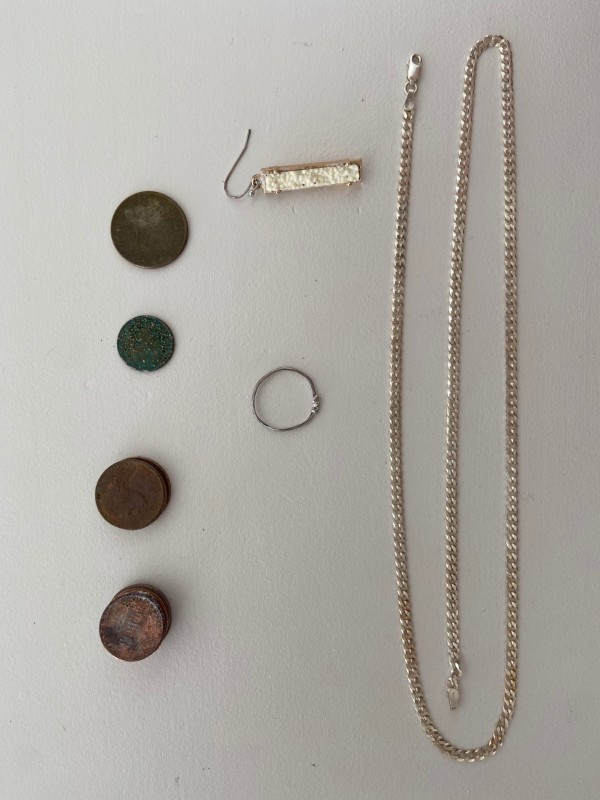
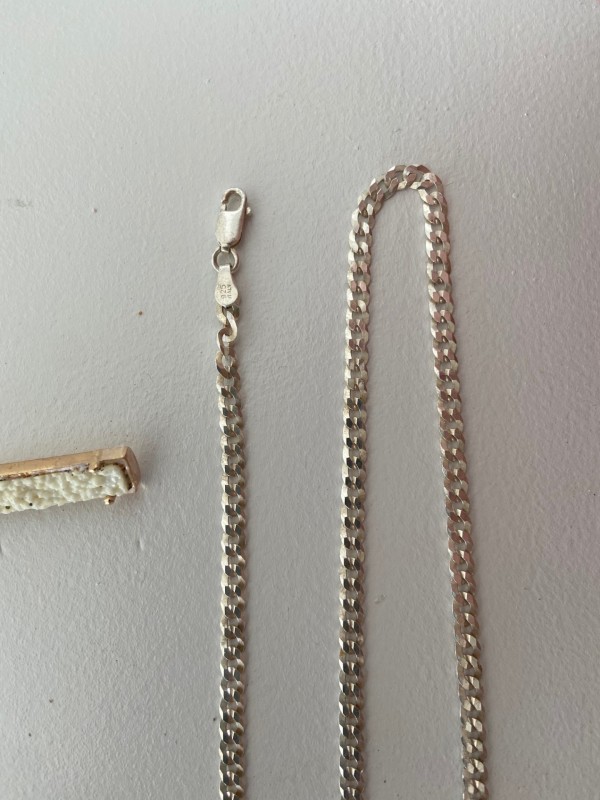
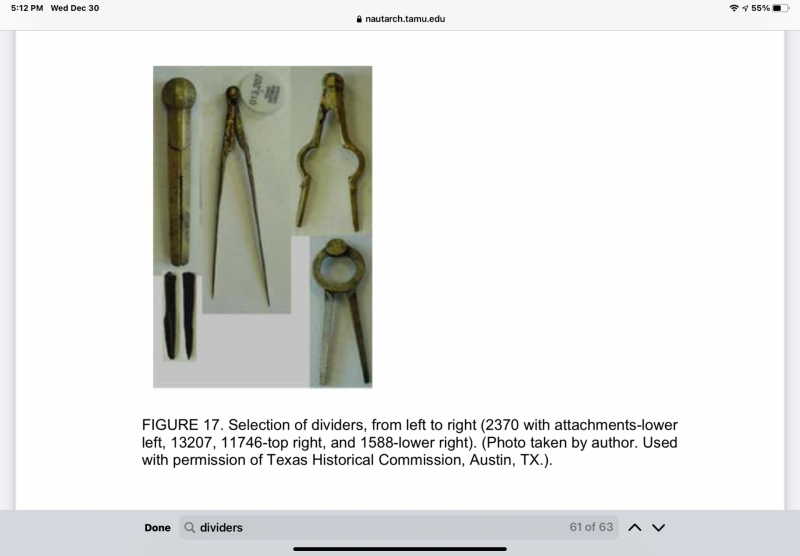
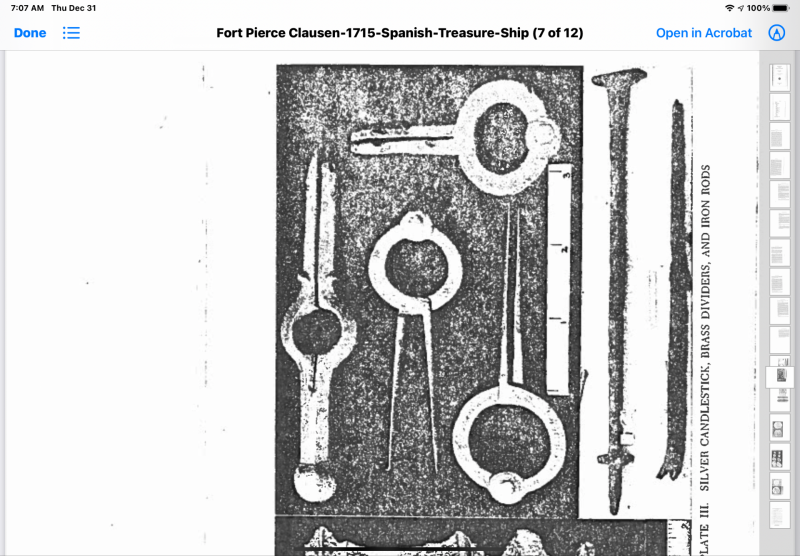
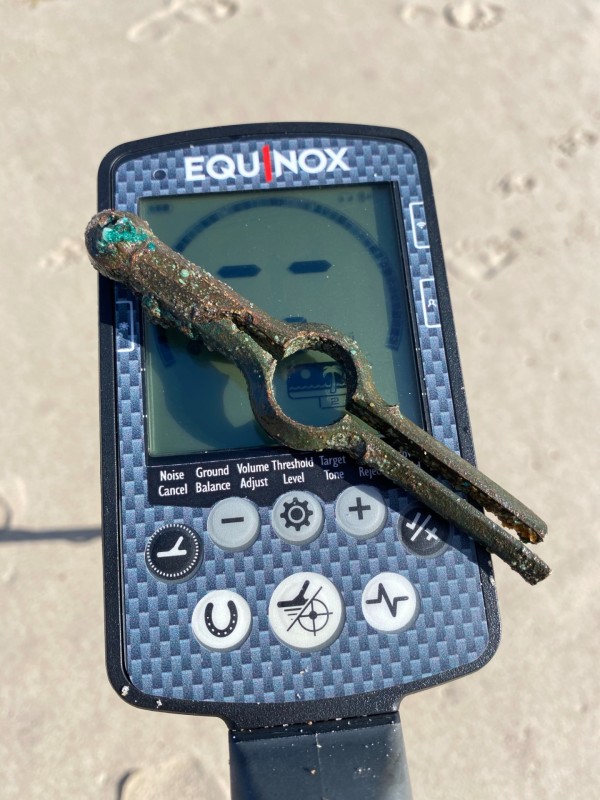
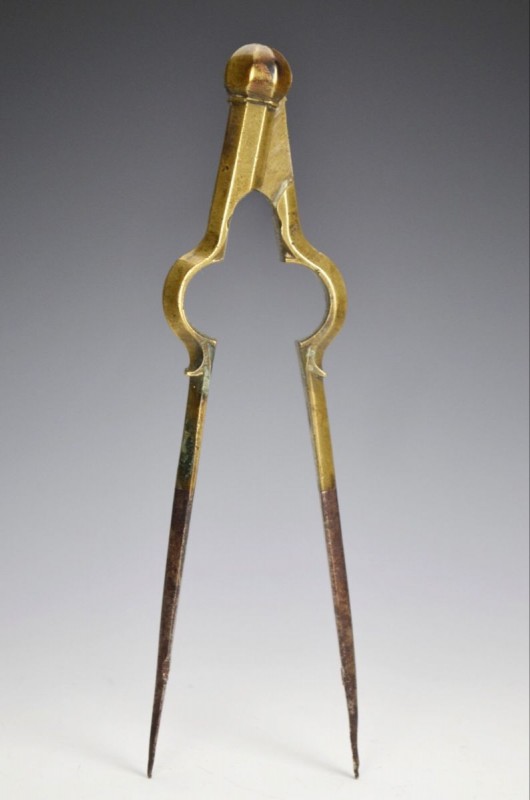
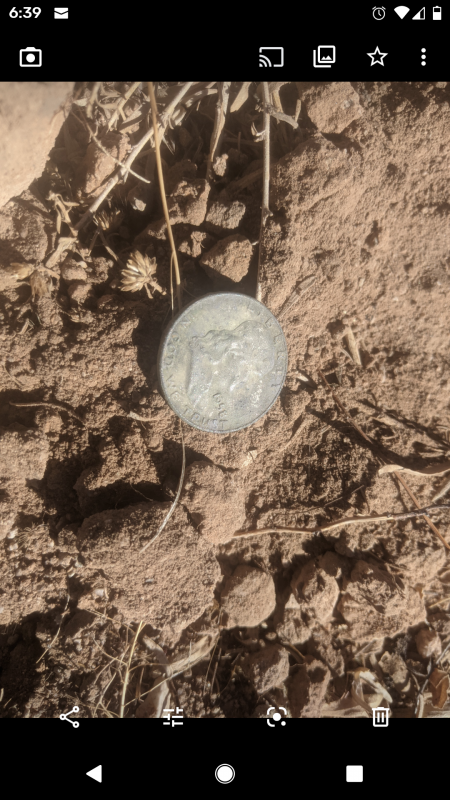
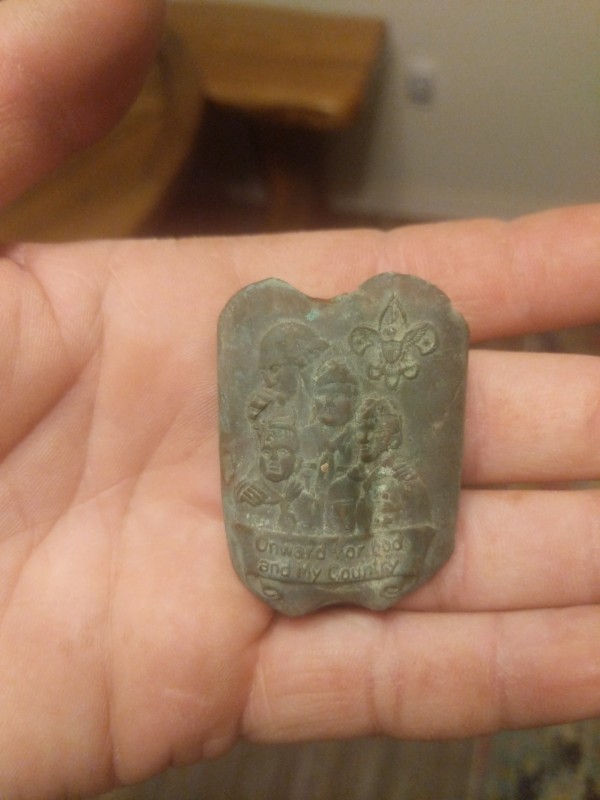
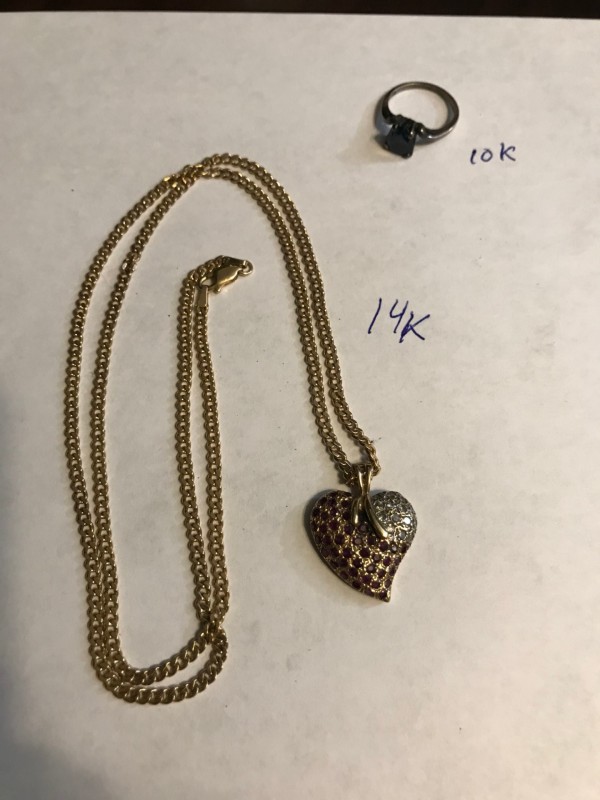
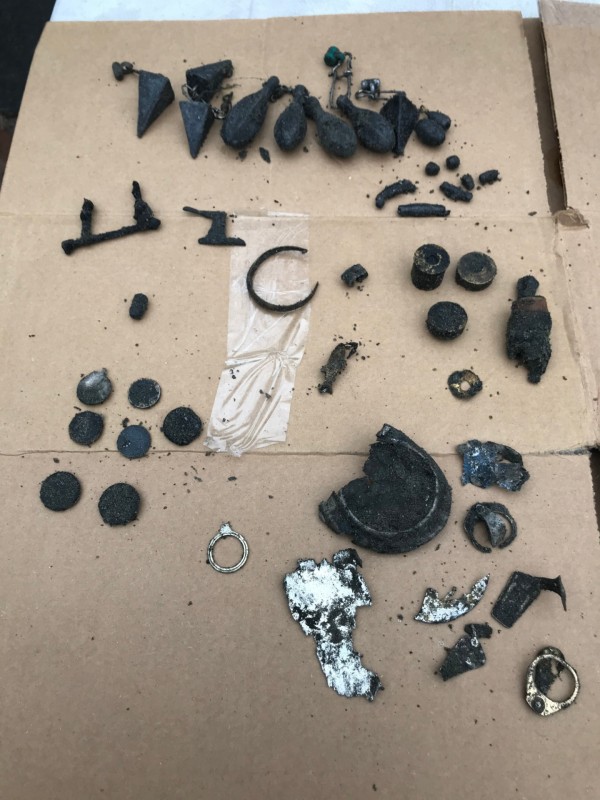
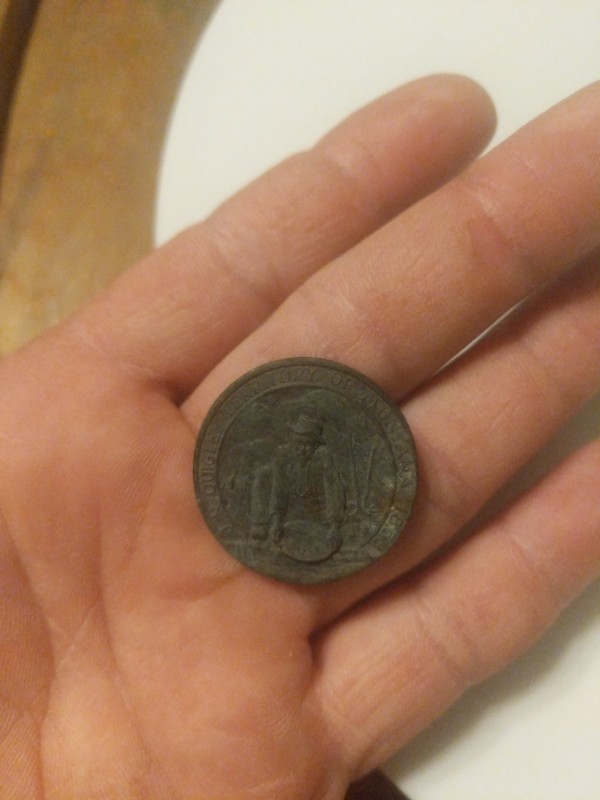
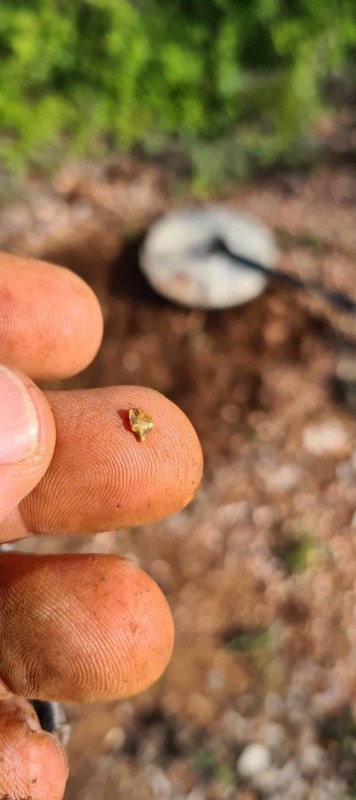
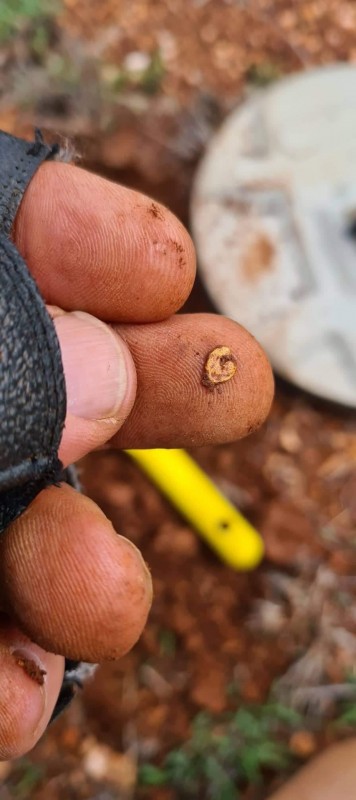
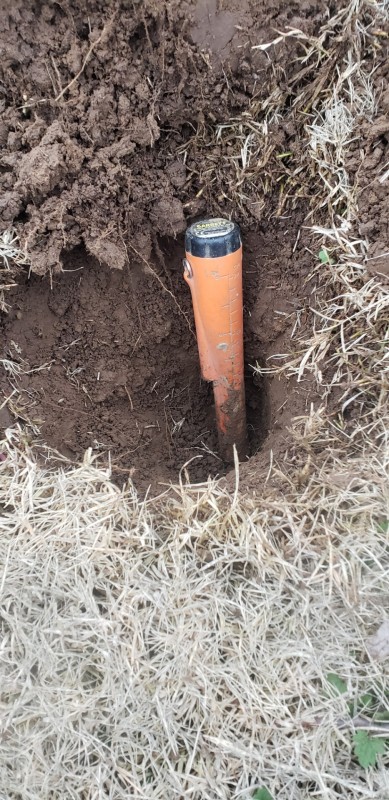
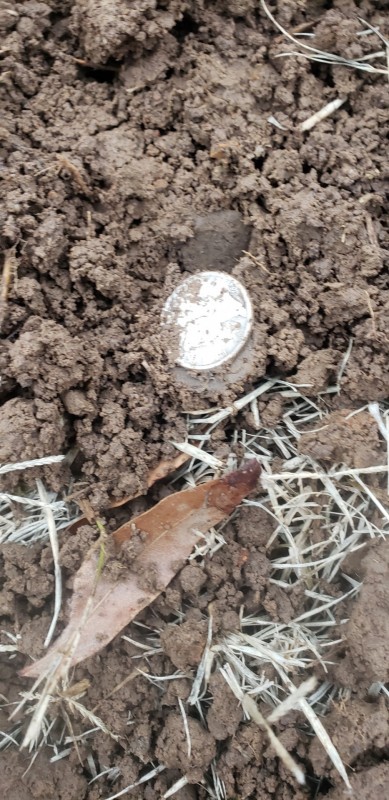
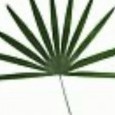
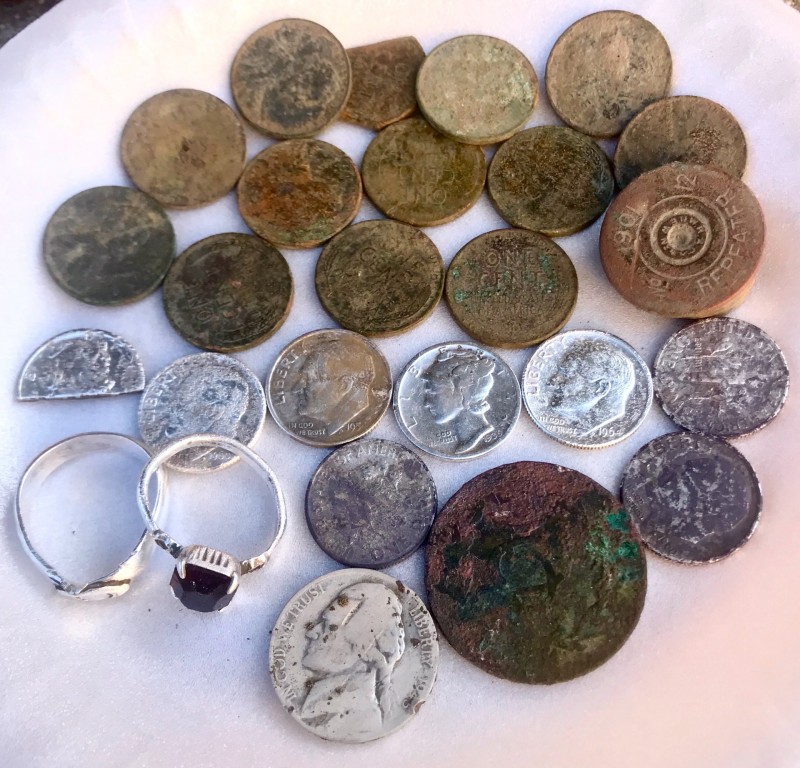

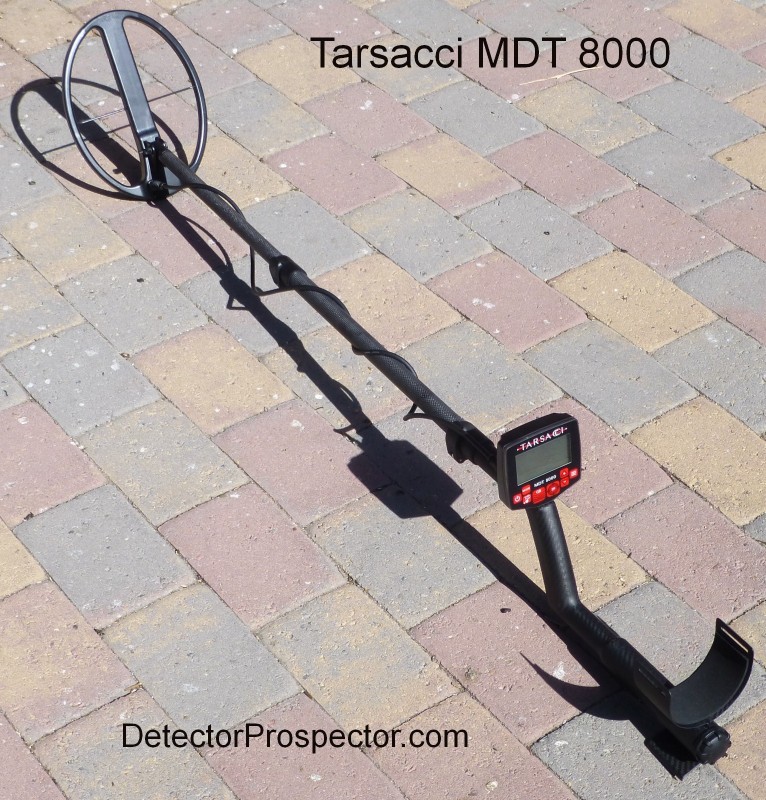

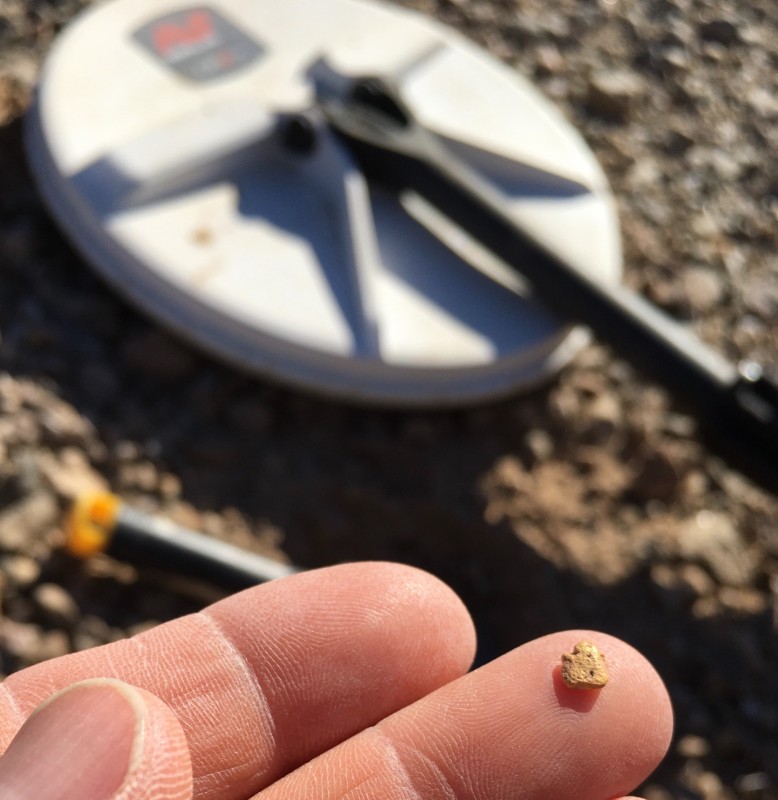
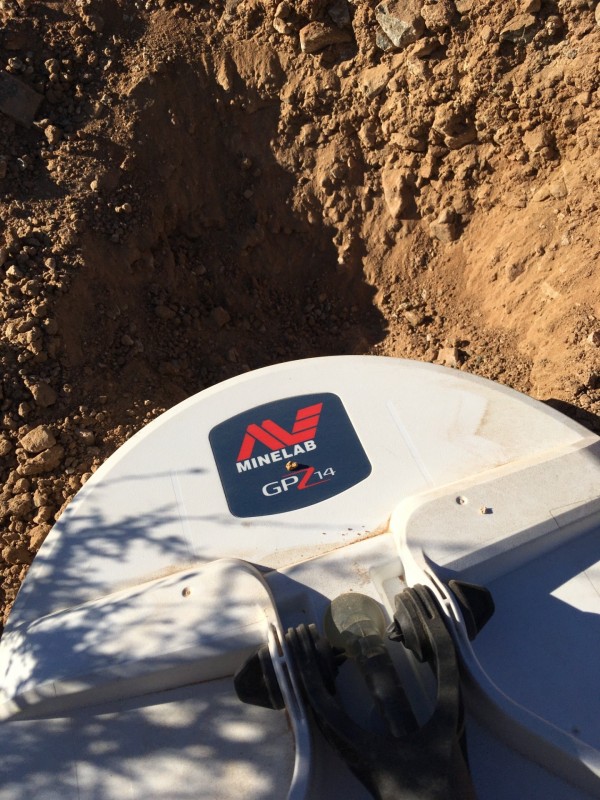
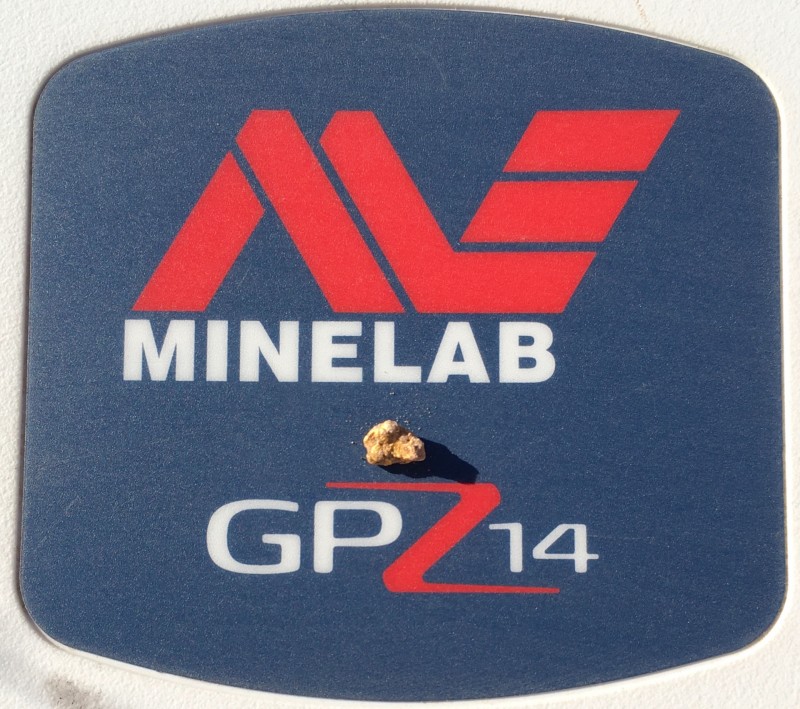


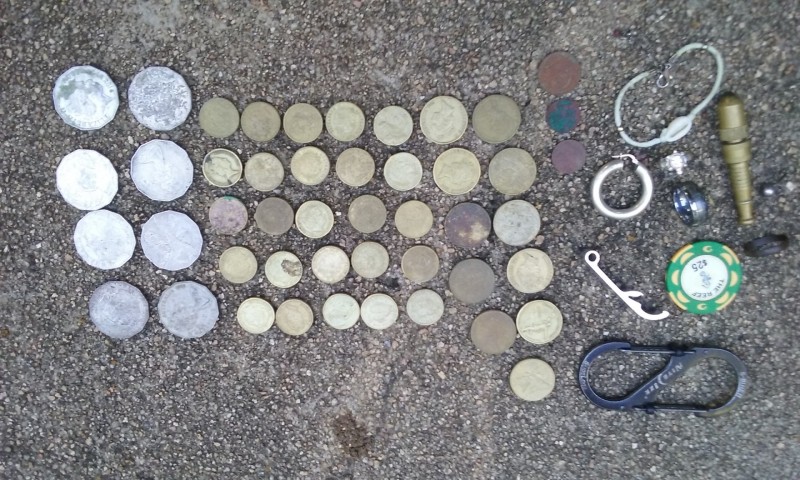
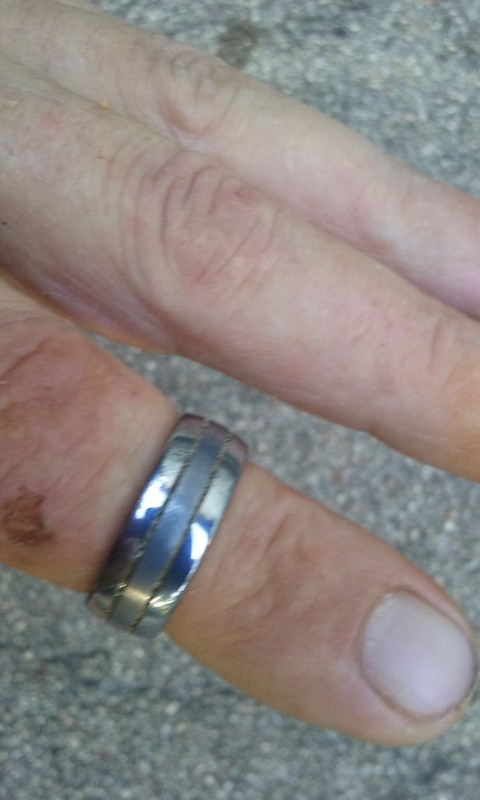


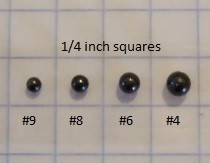
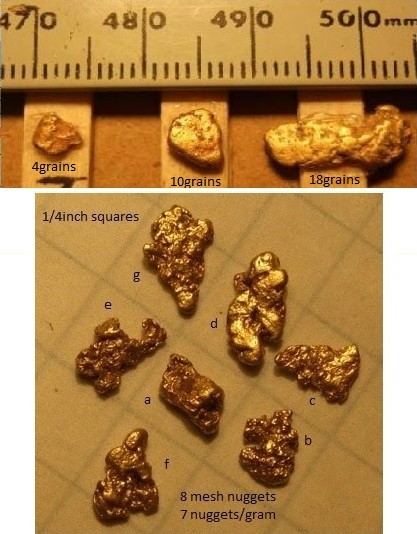
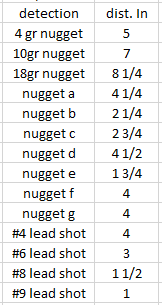

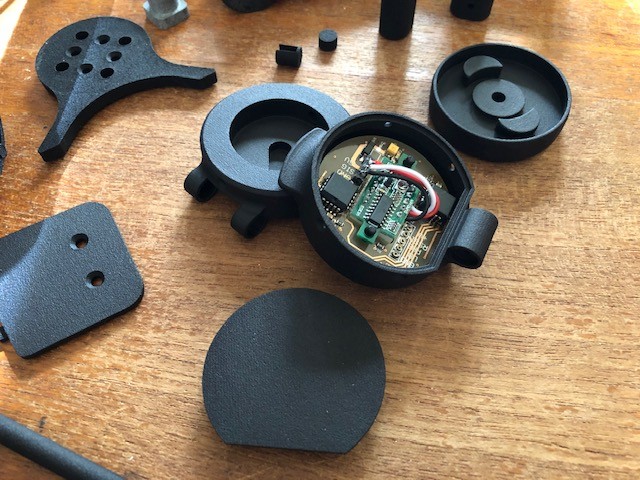
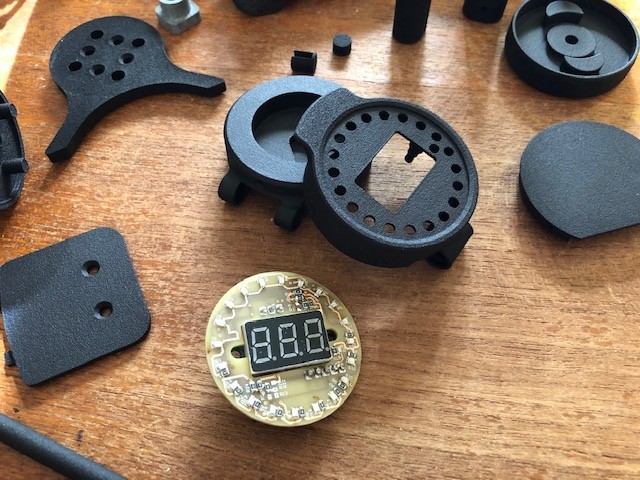
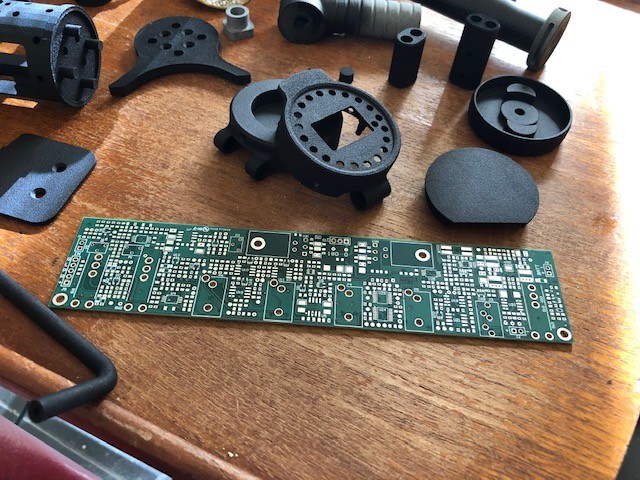
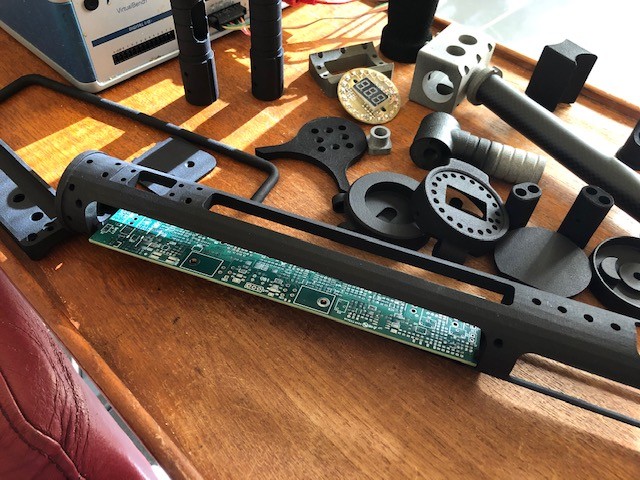
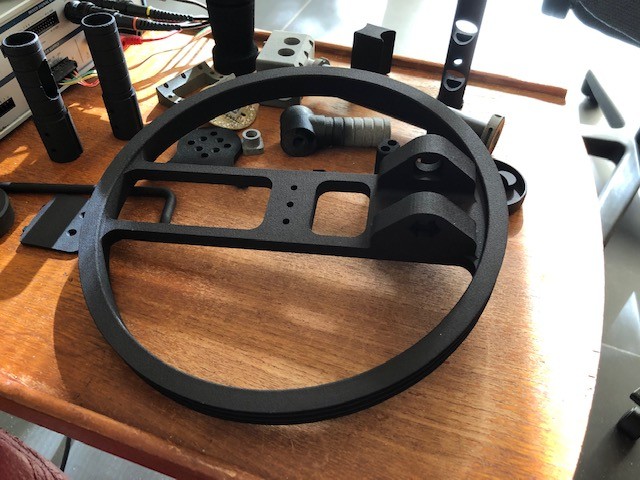
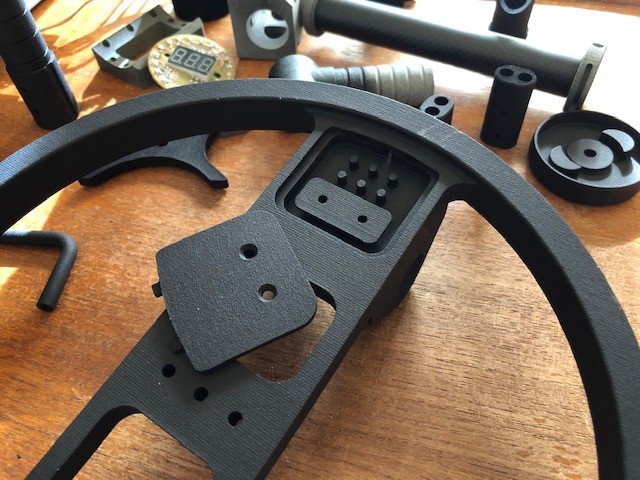
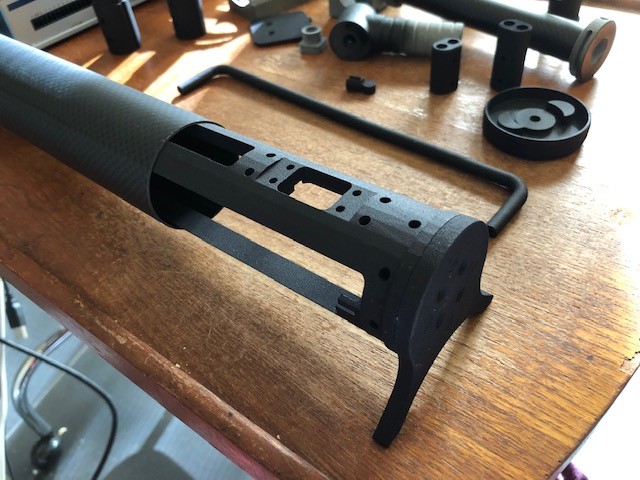
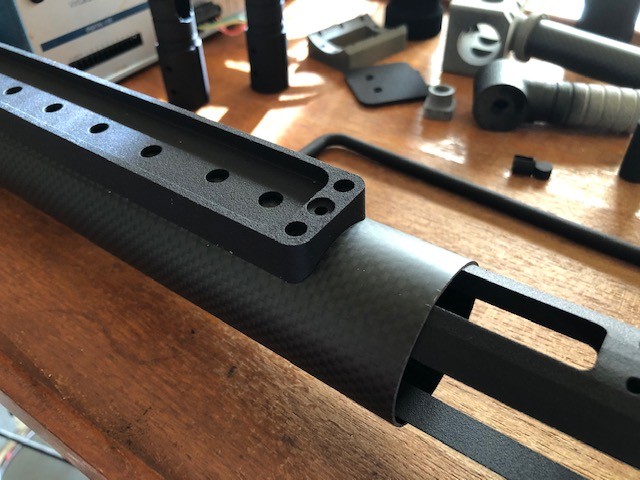
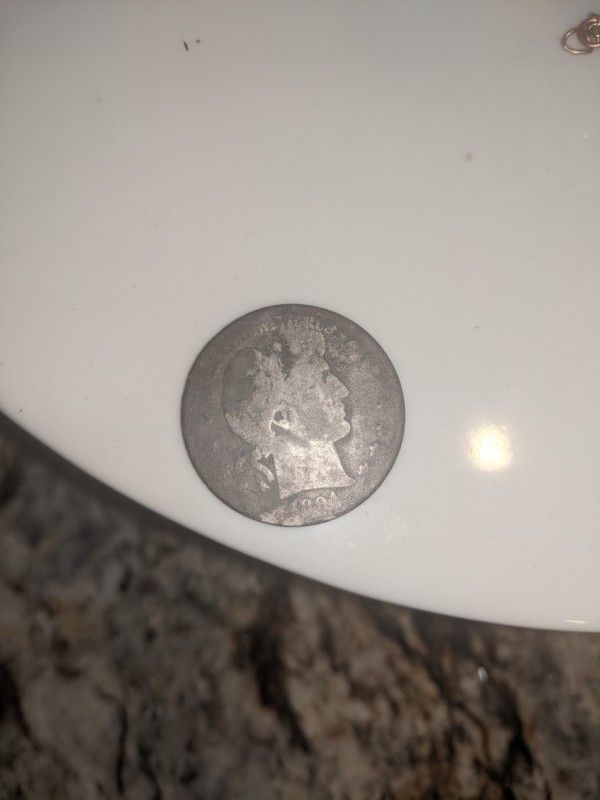
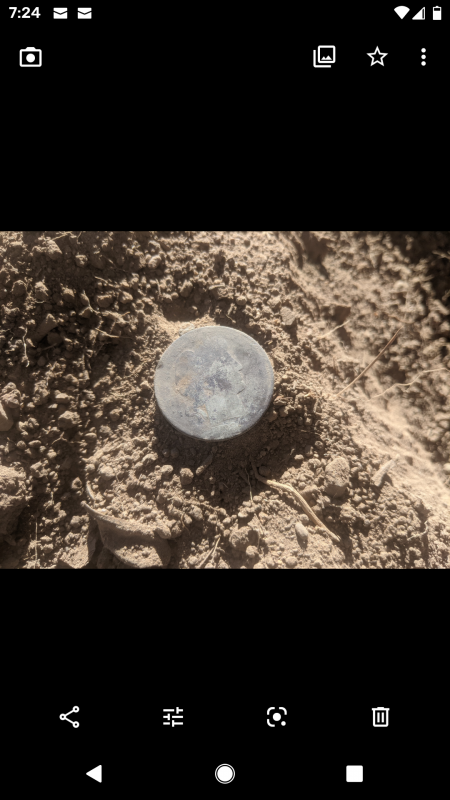
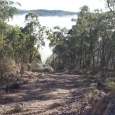




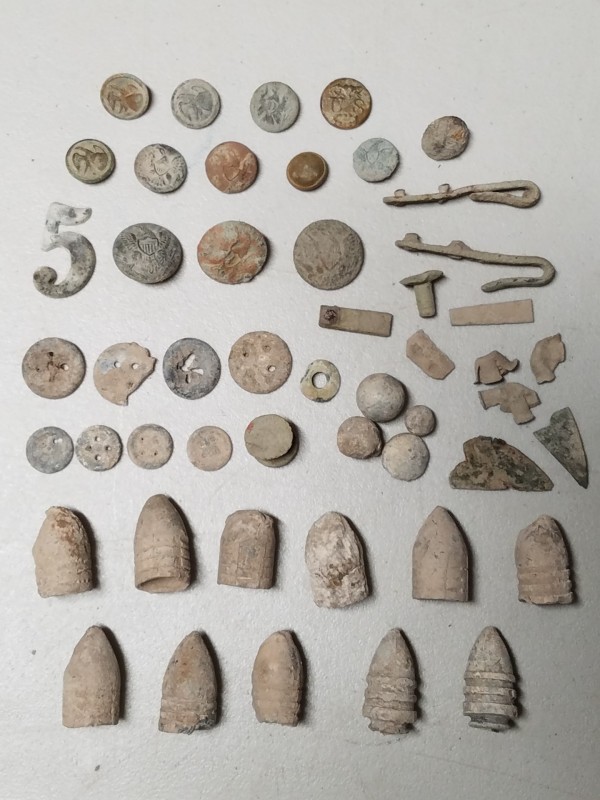
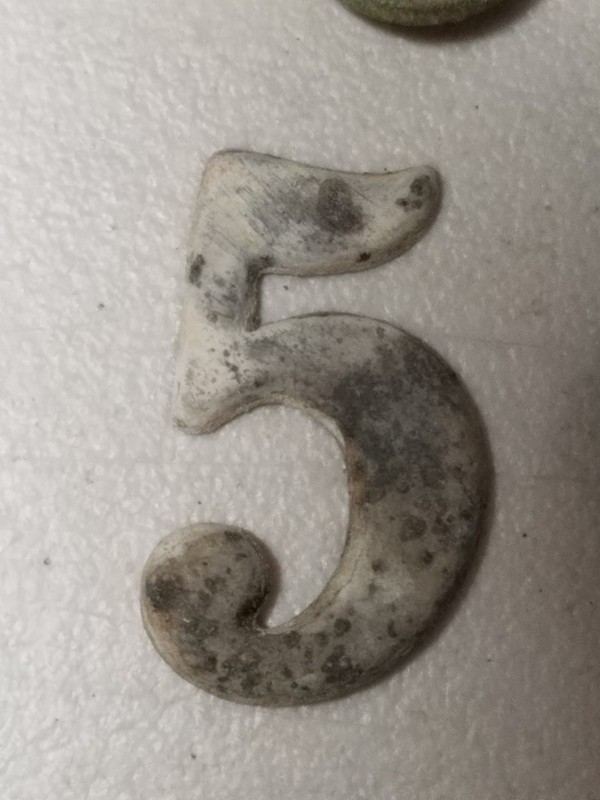
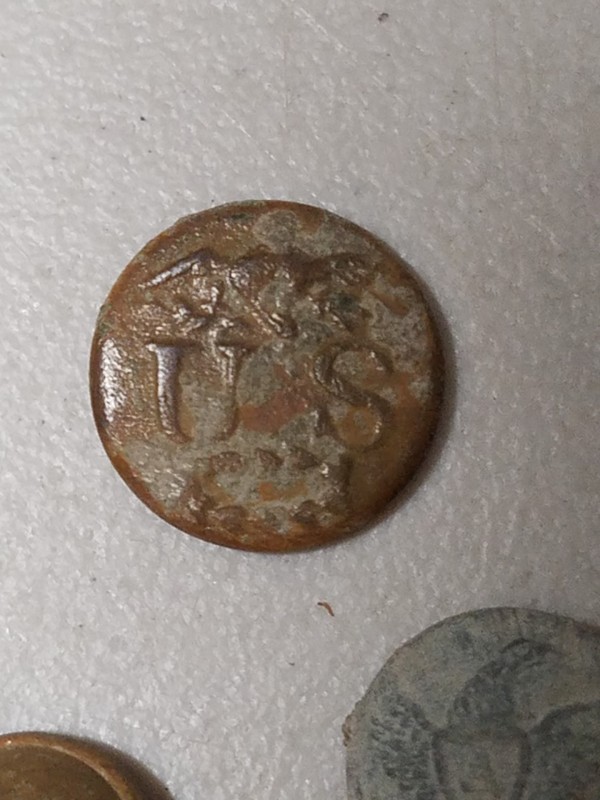
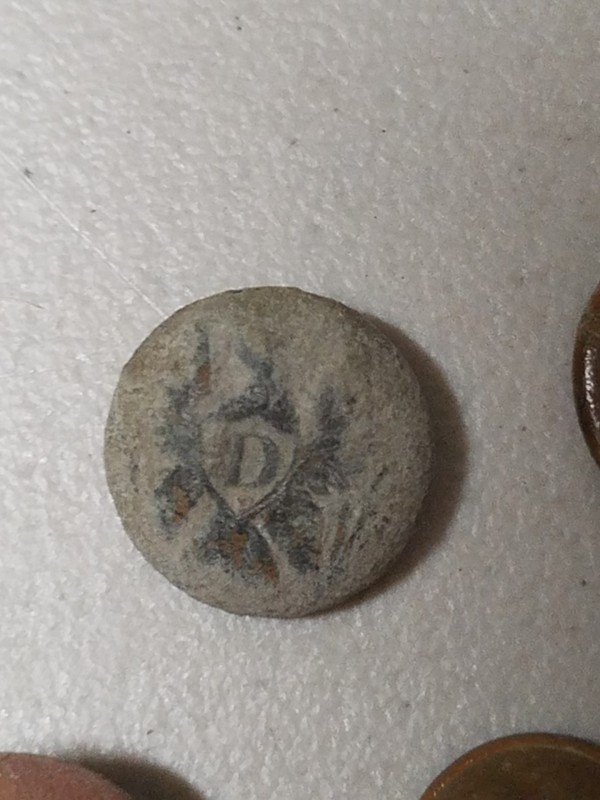
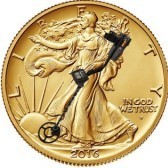
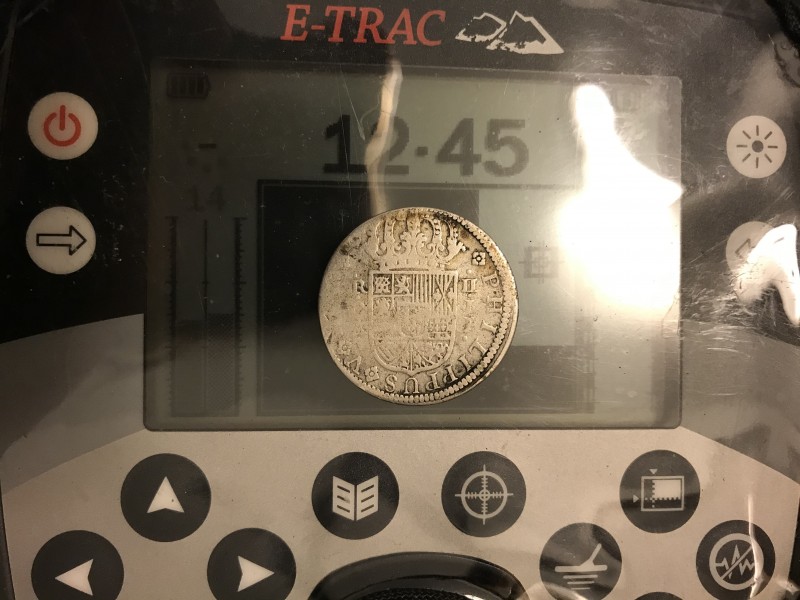
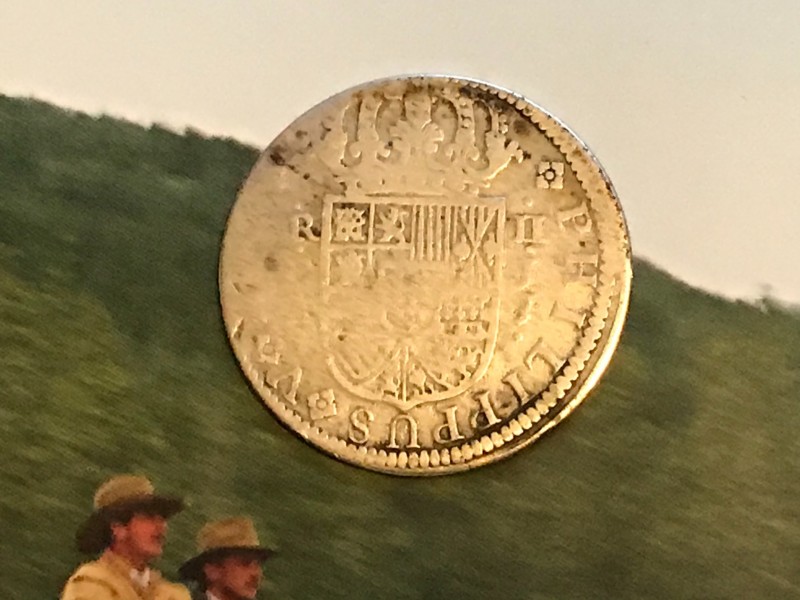
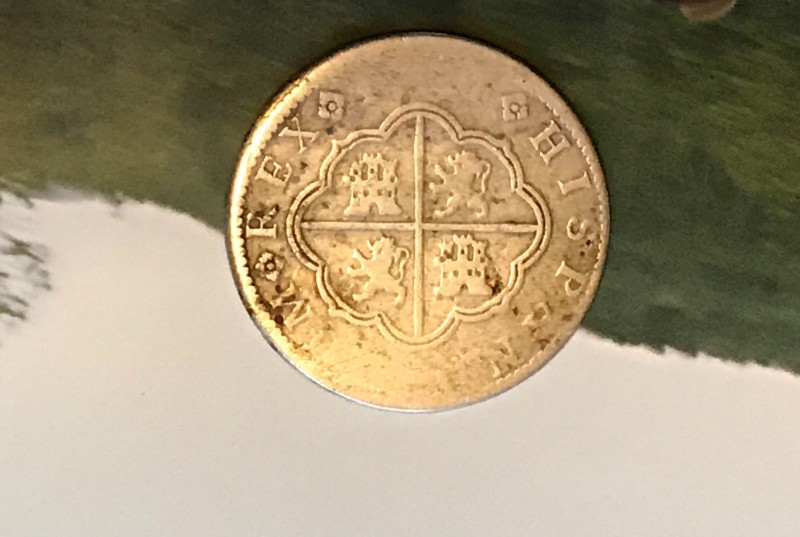

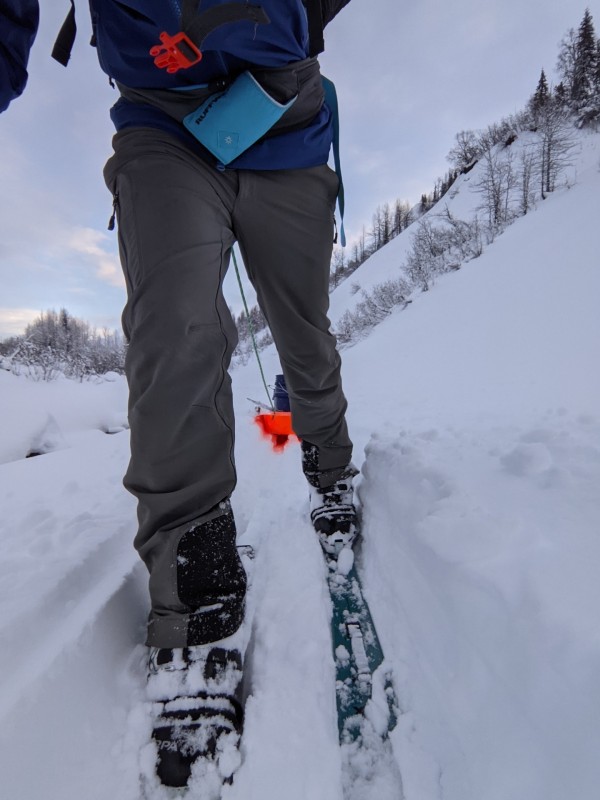

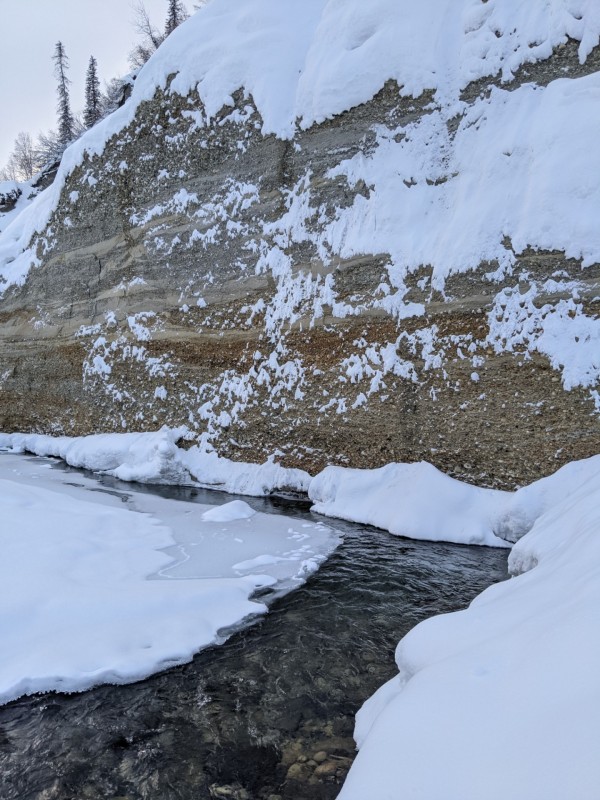
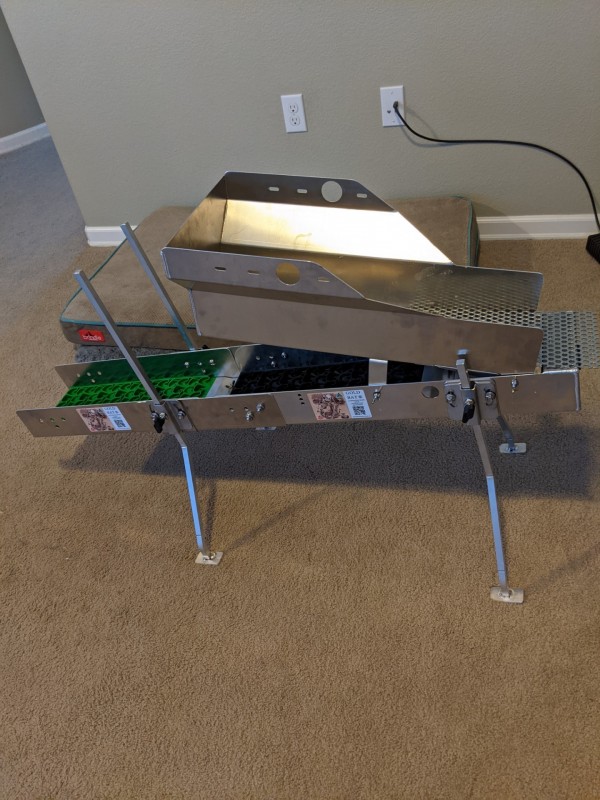
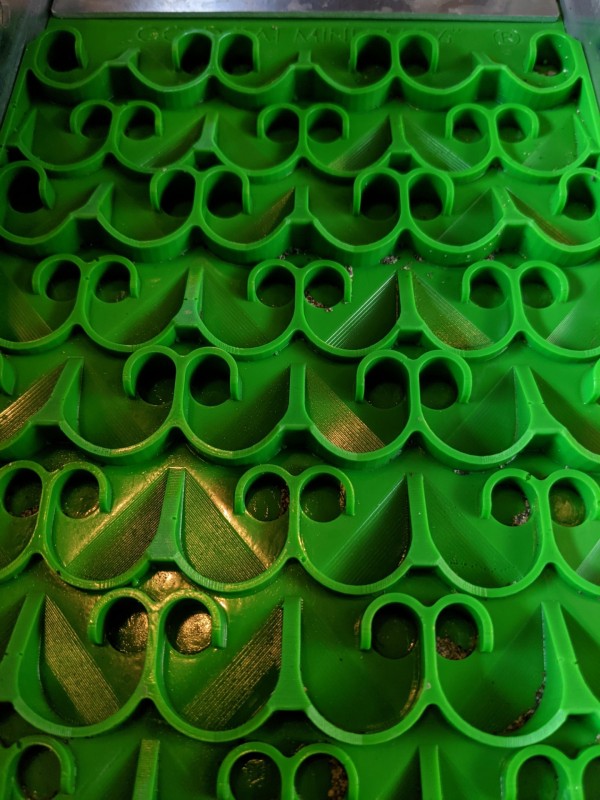
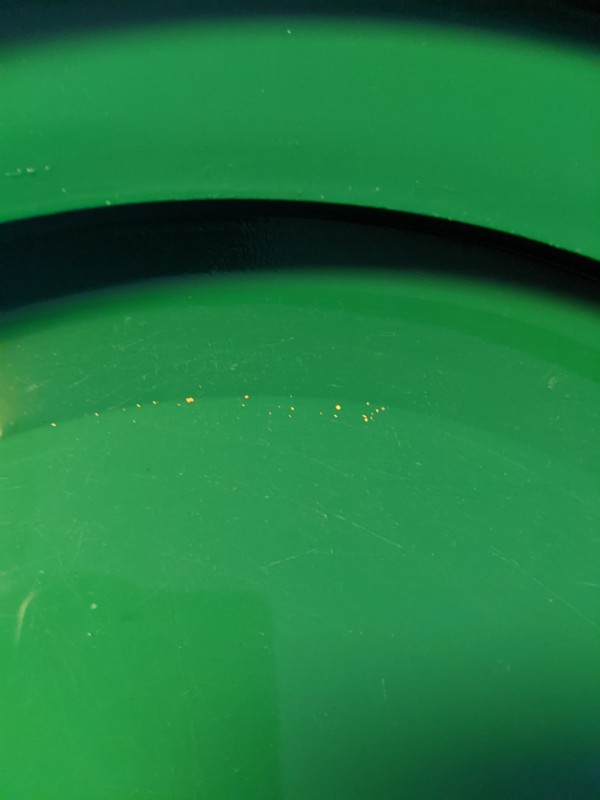


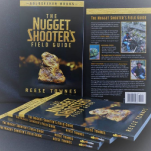
.thumb.jpg.95344db3aeef0a4c6c73420daa366191.jpg)


